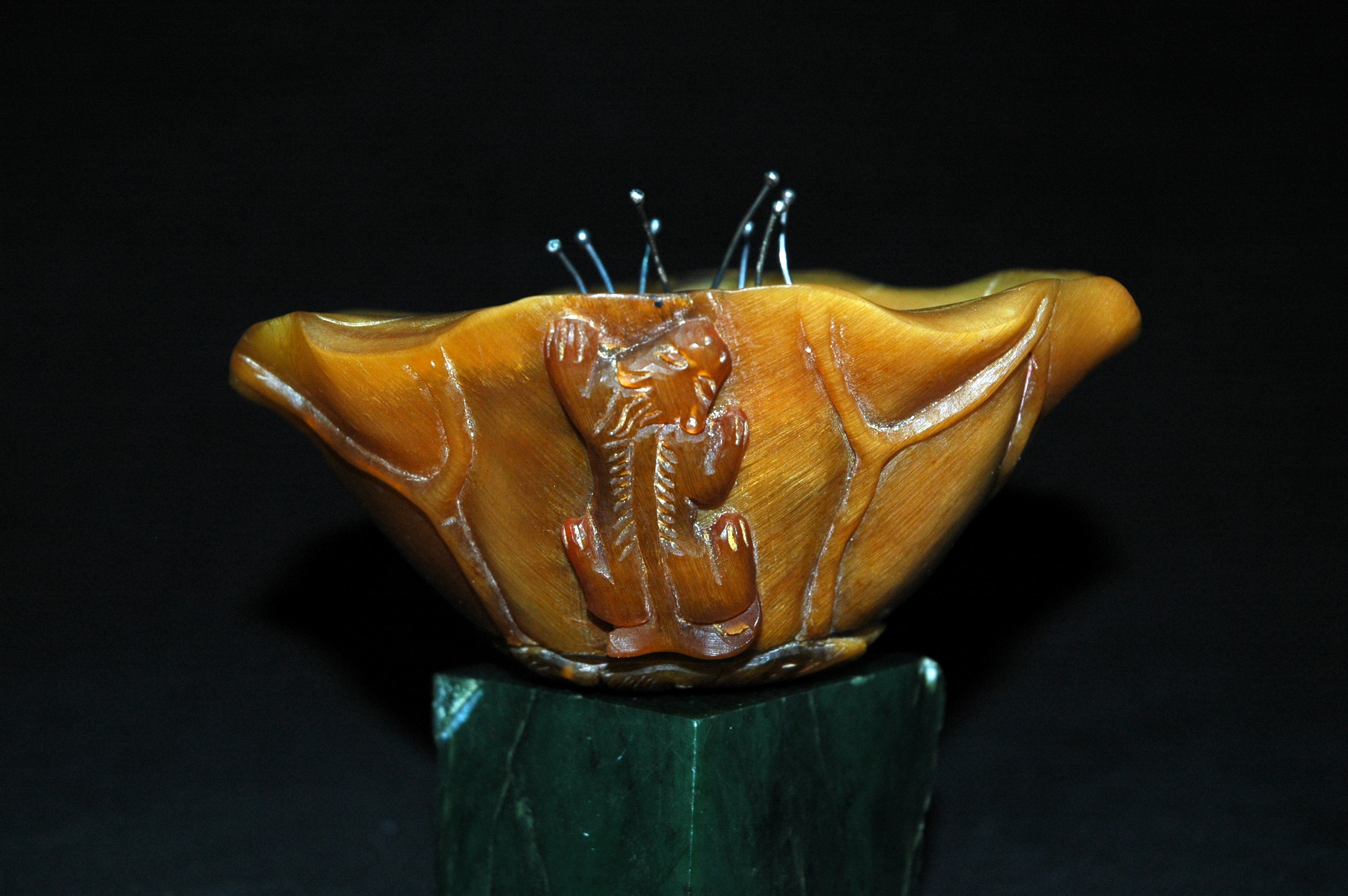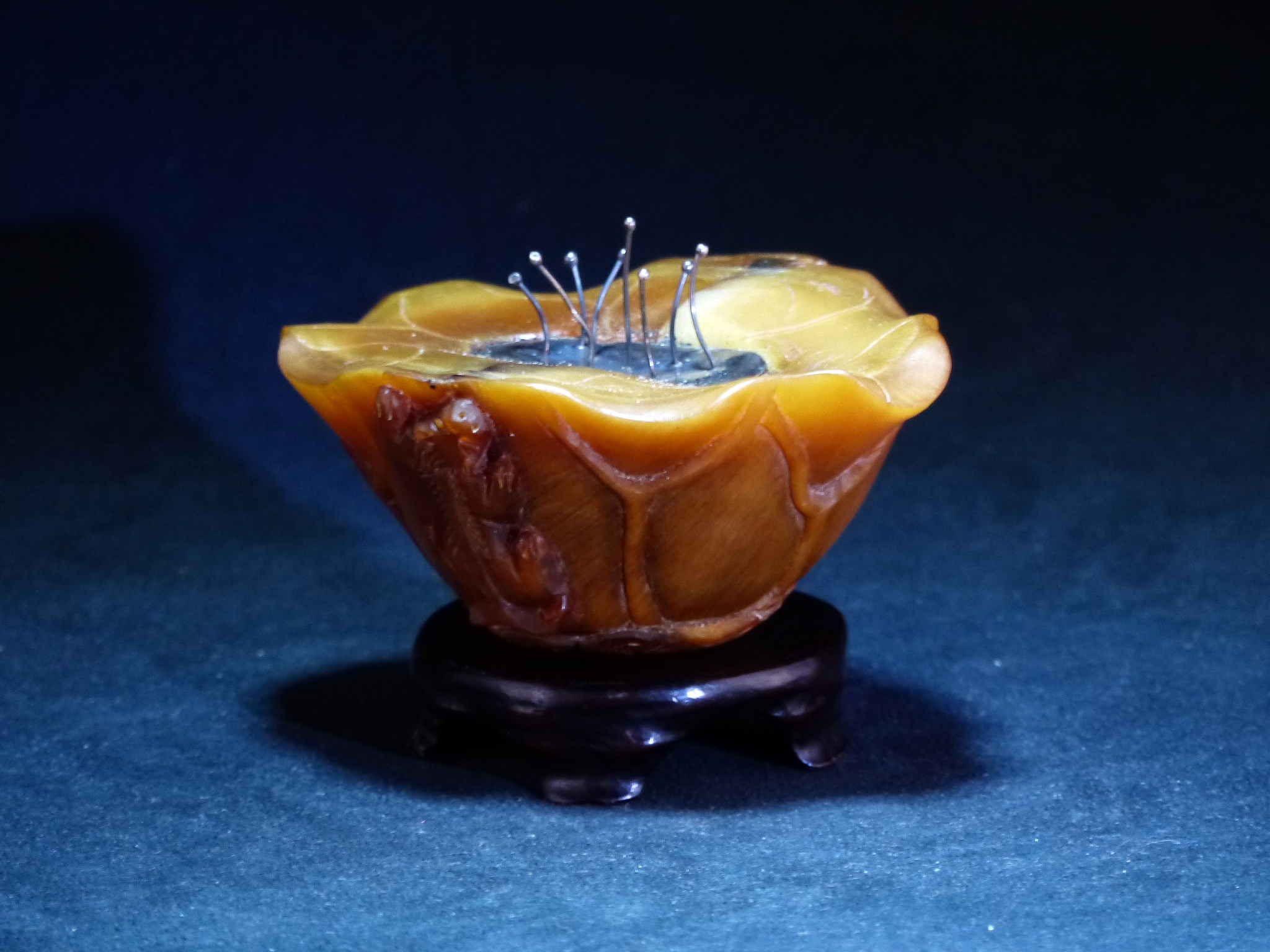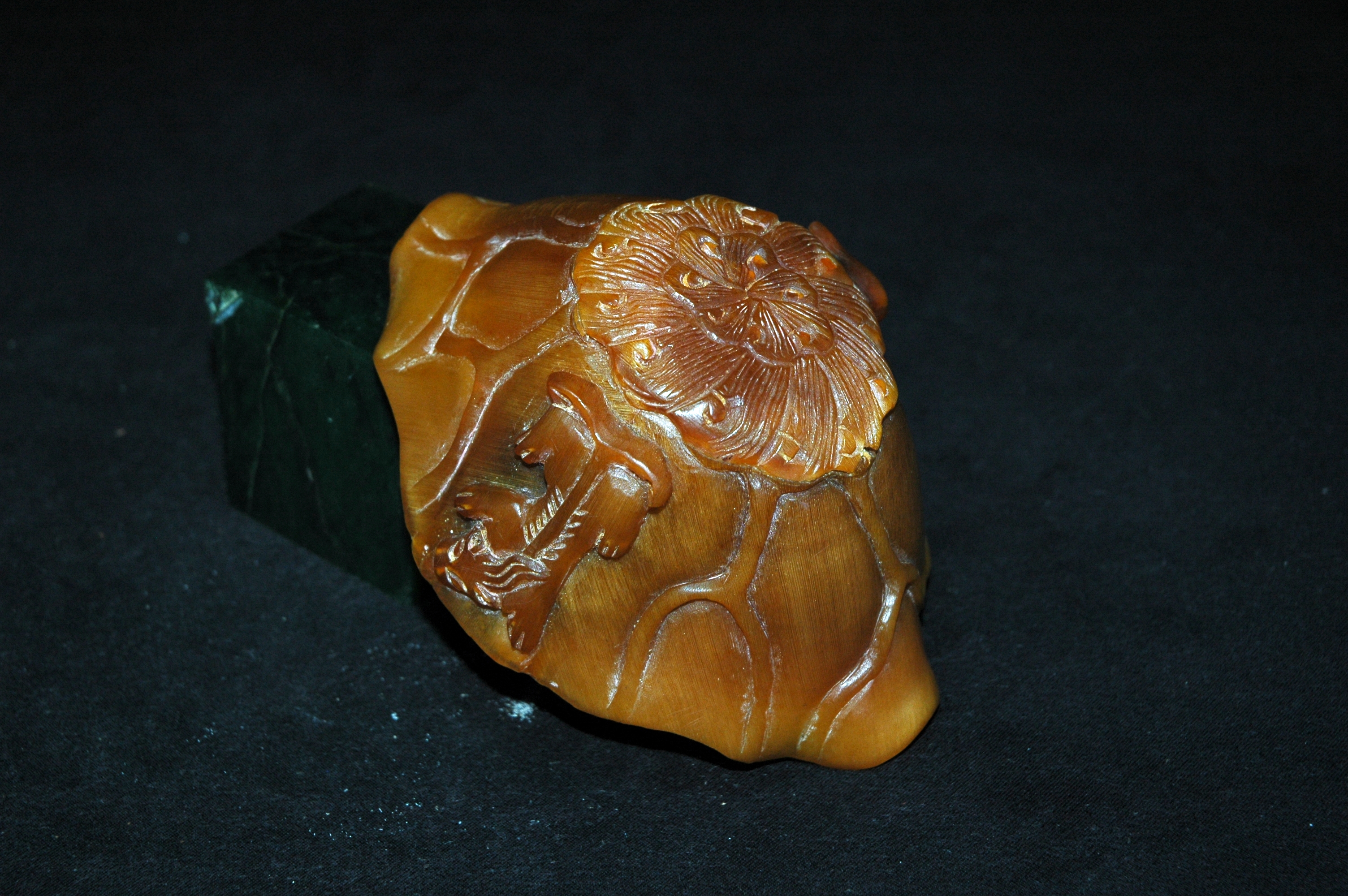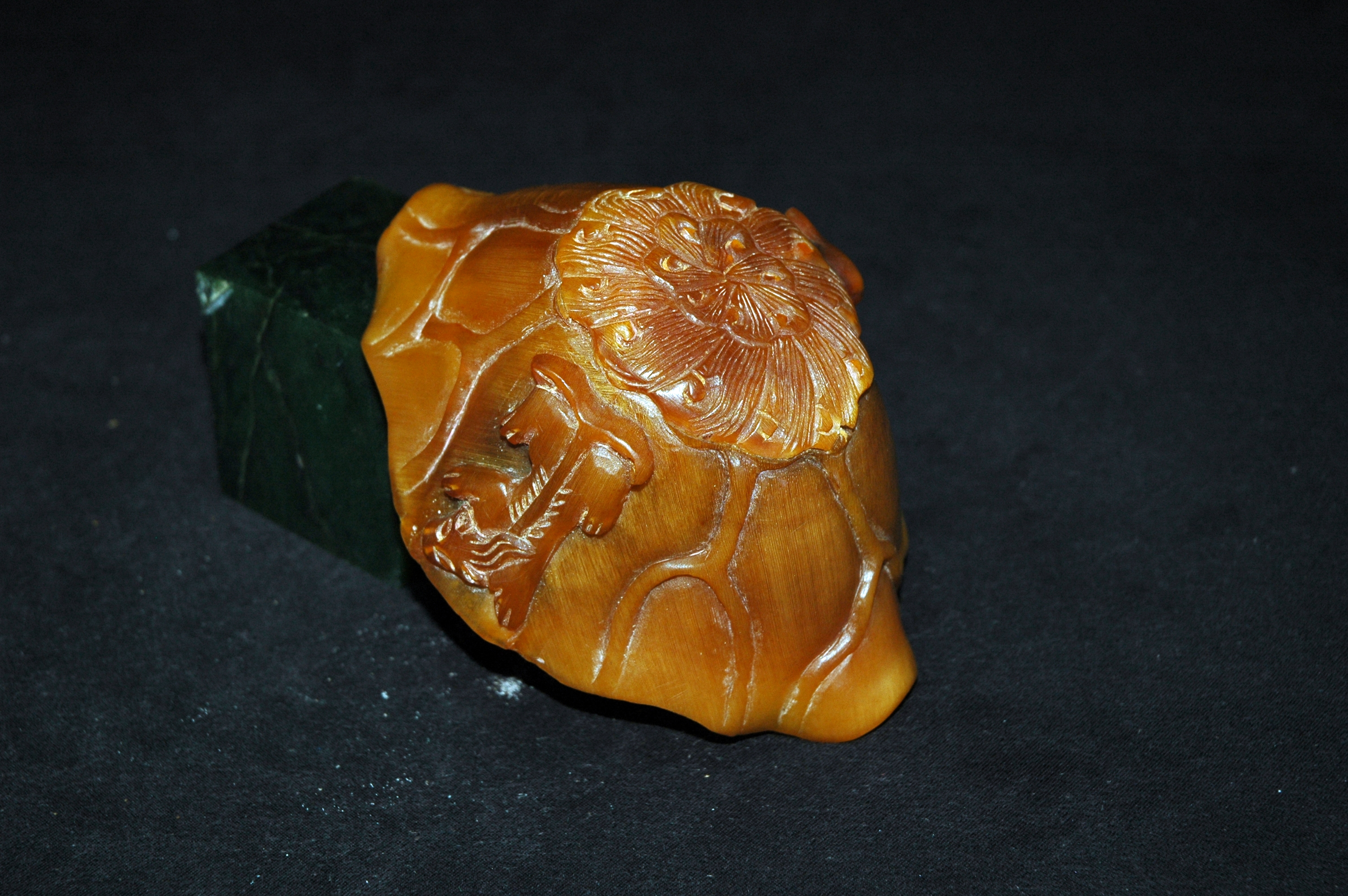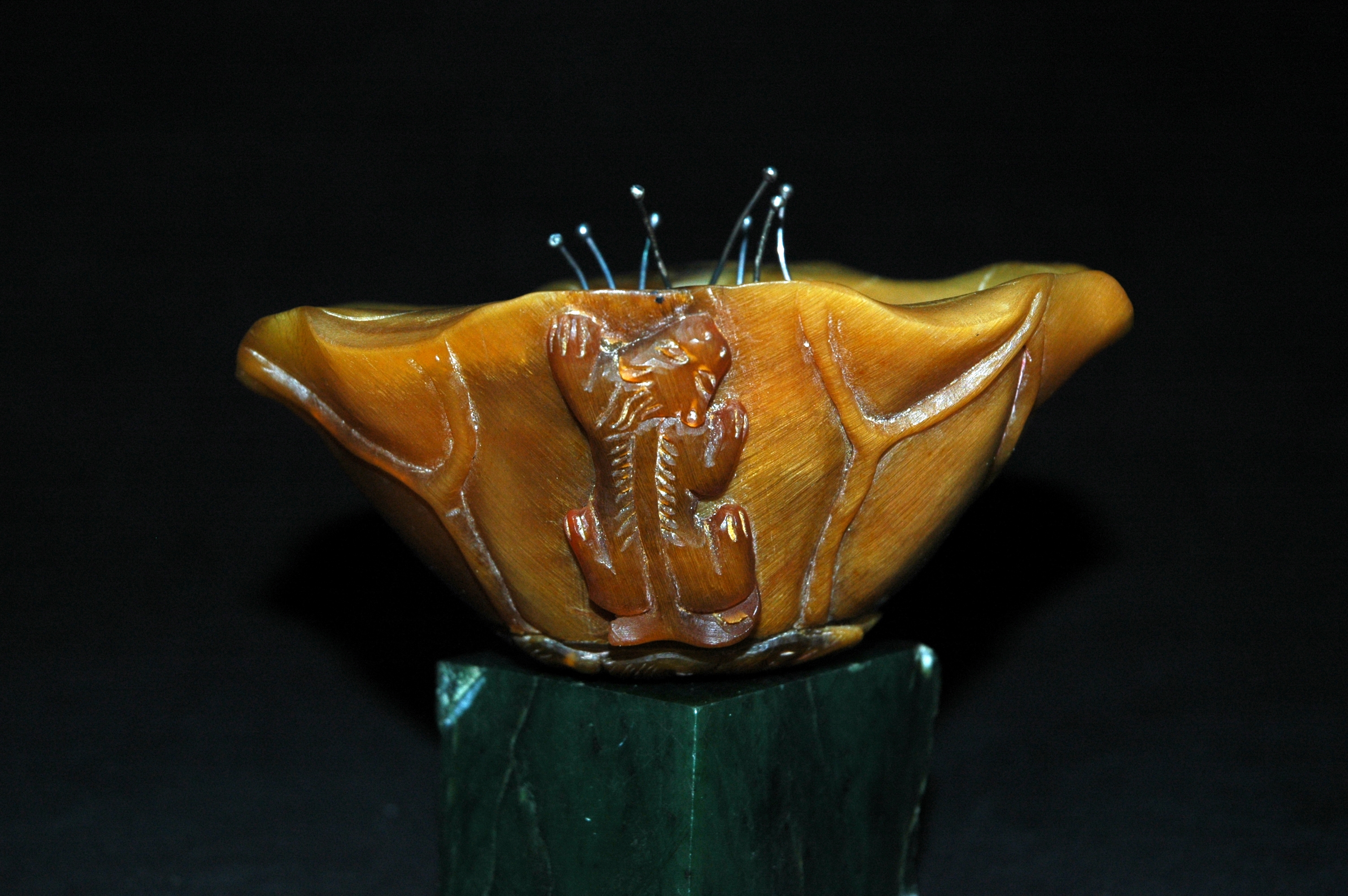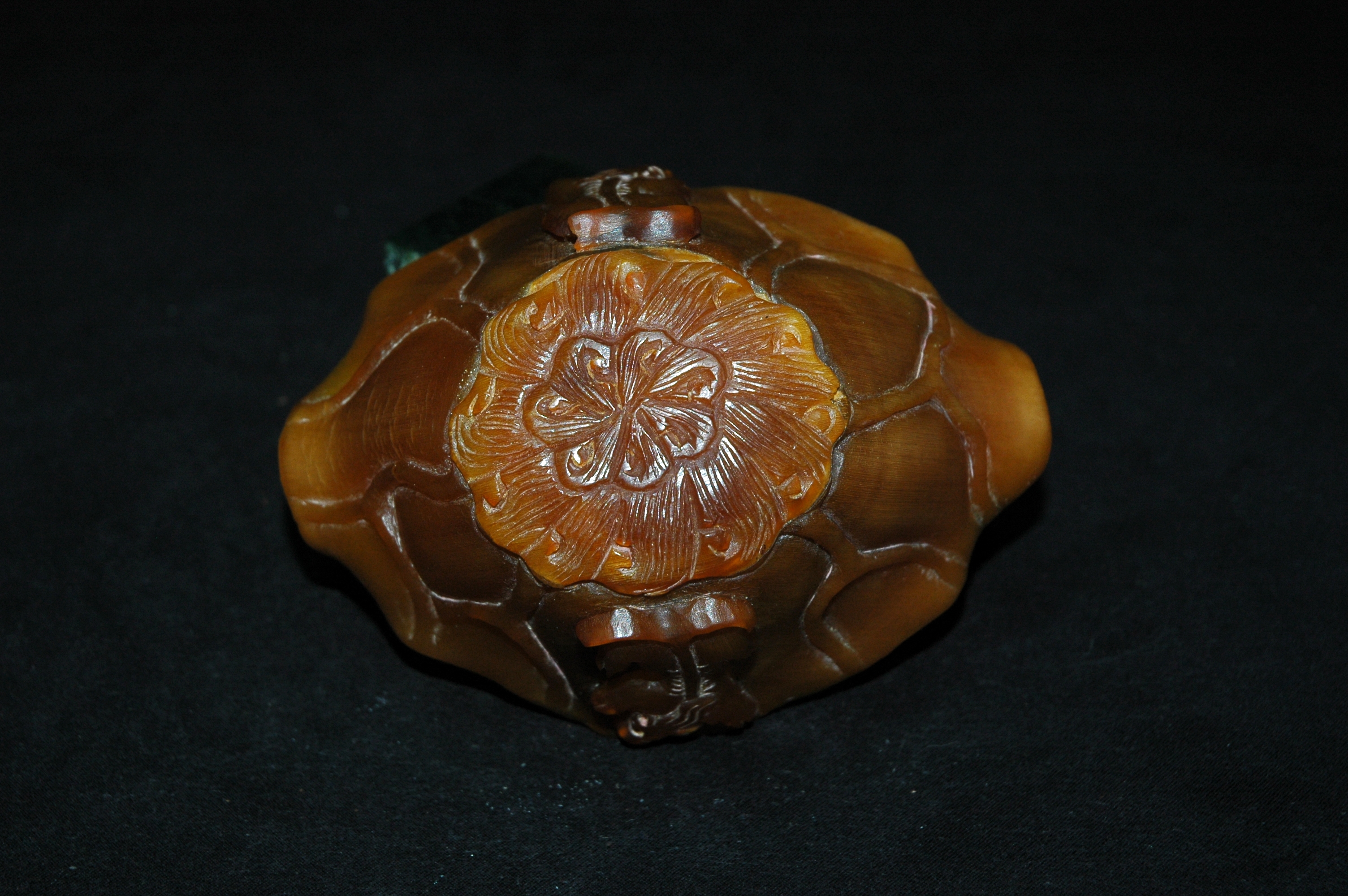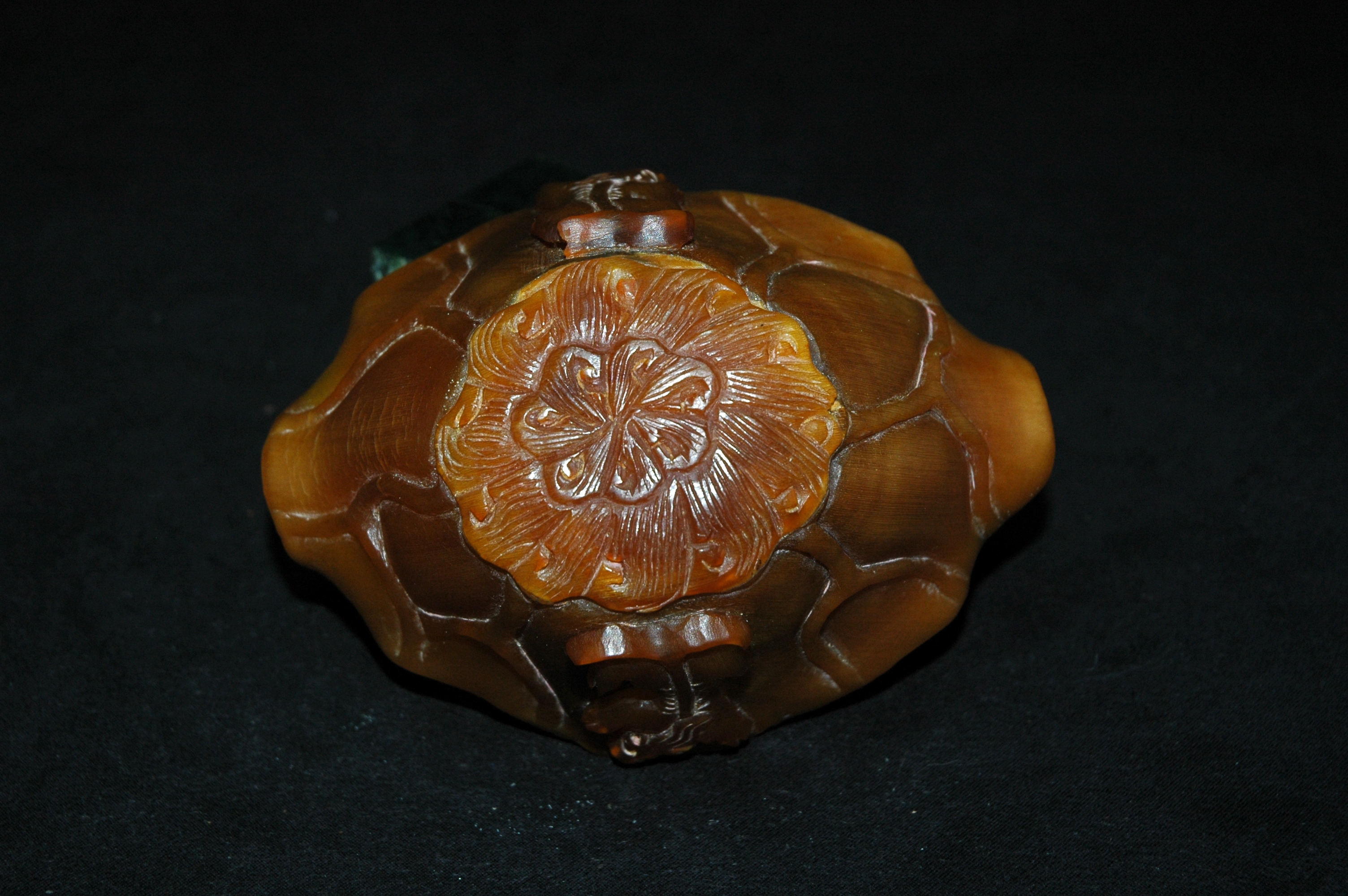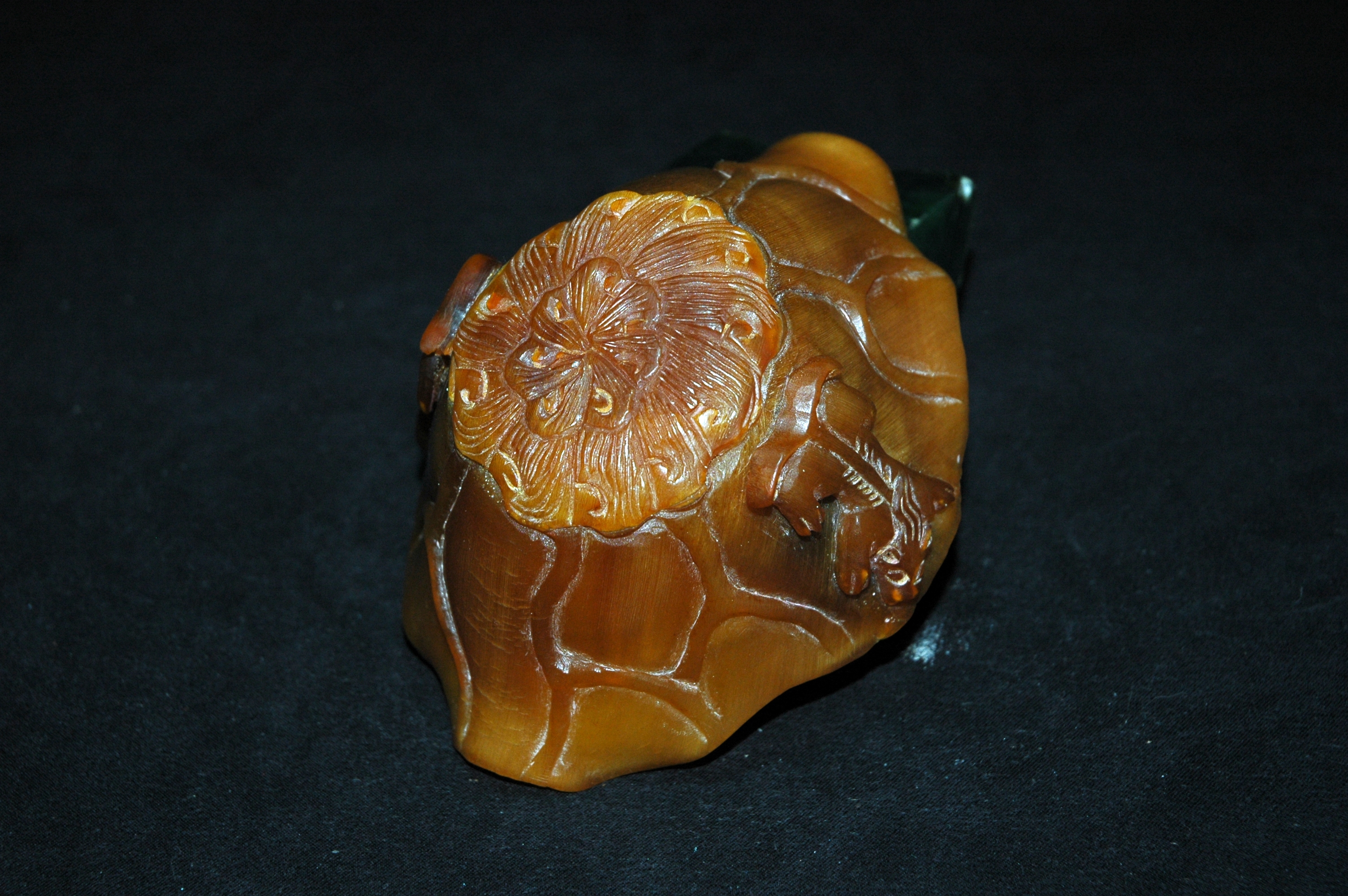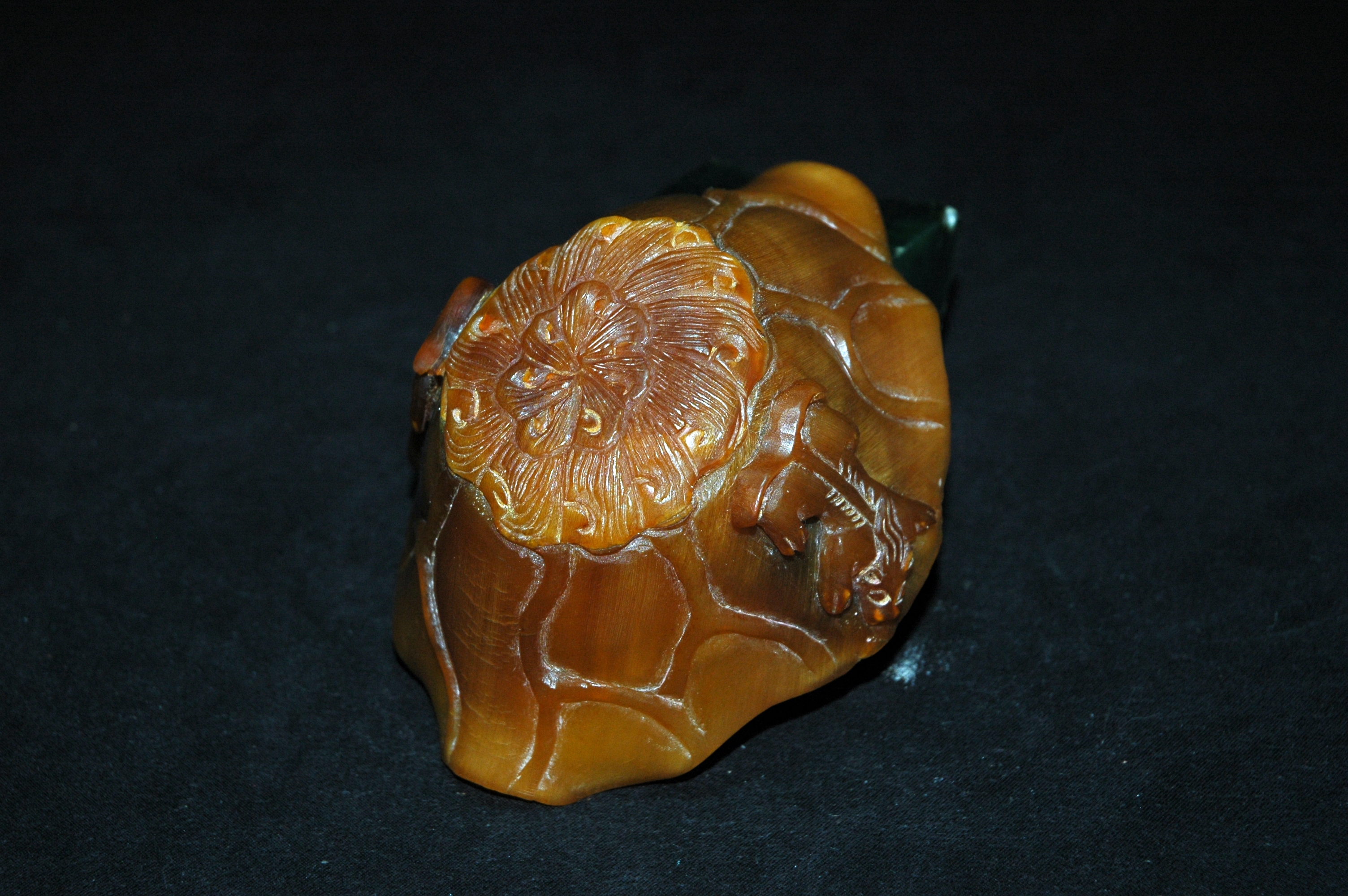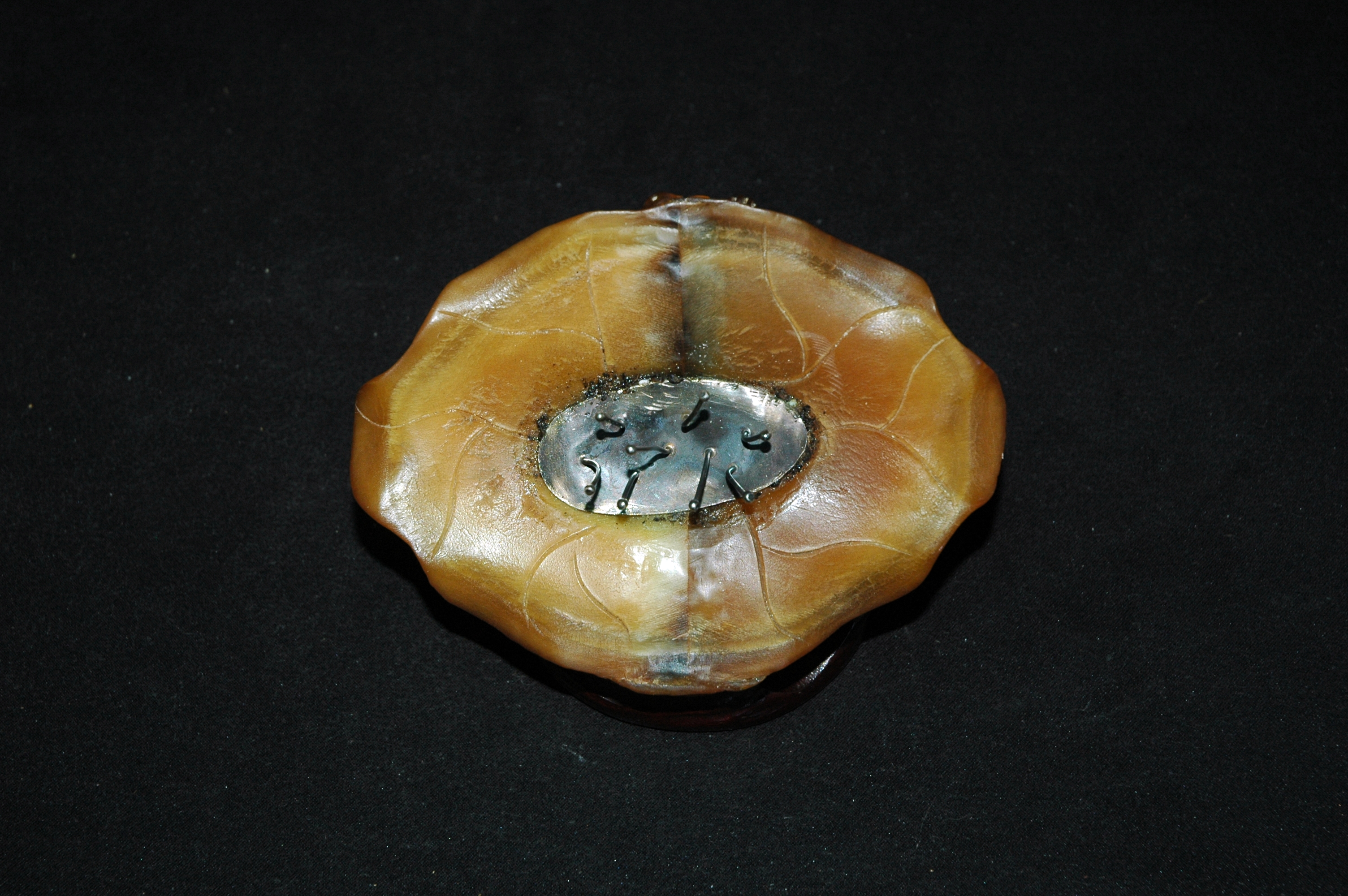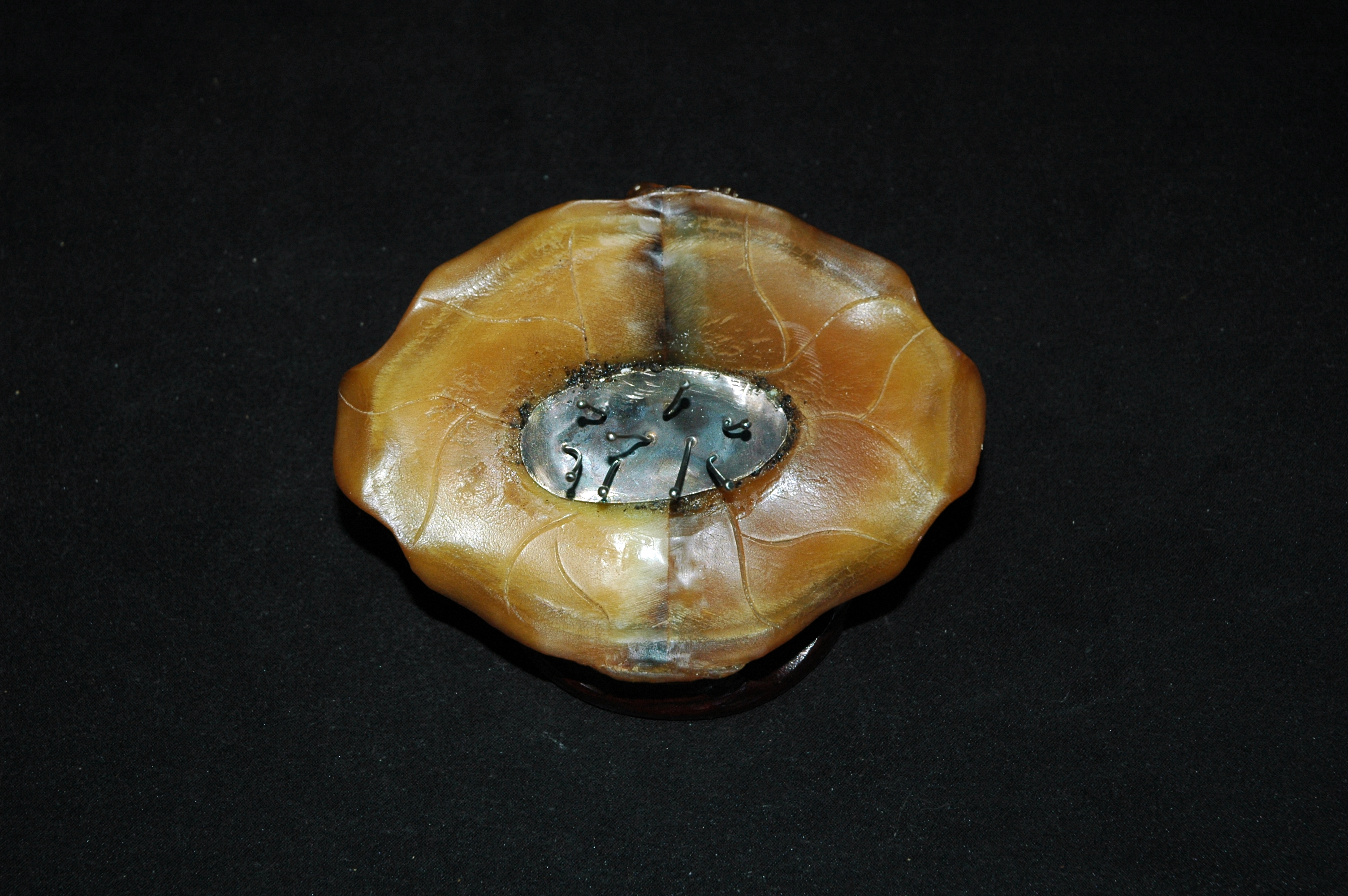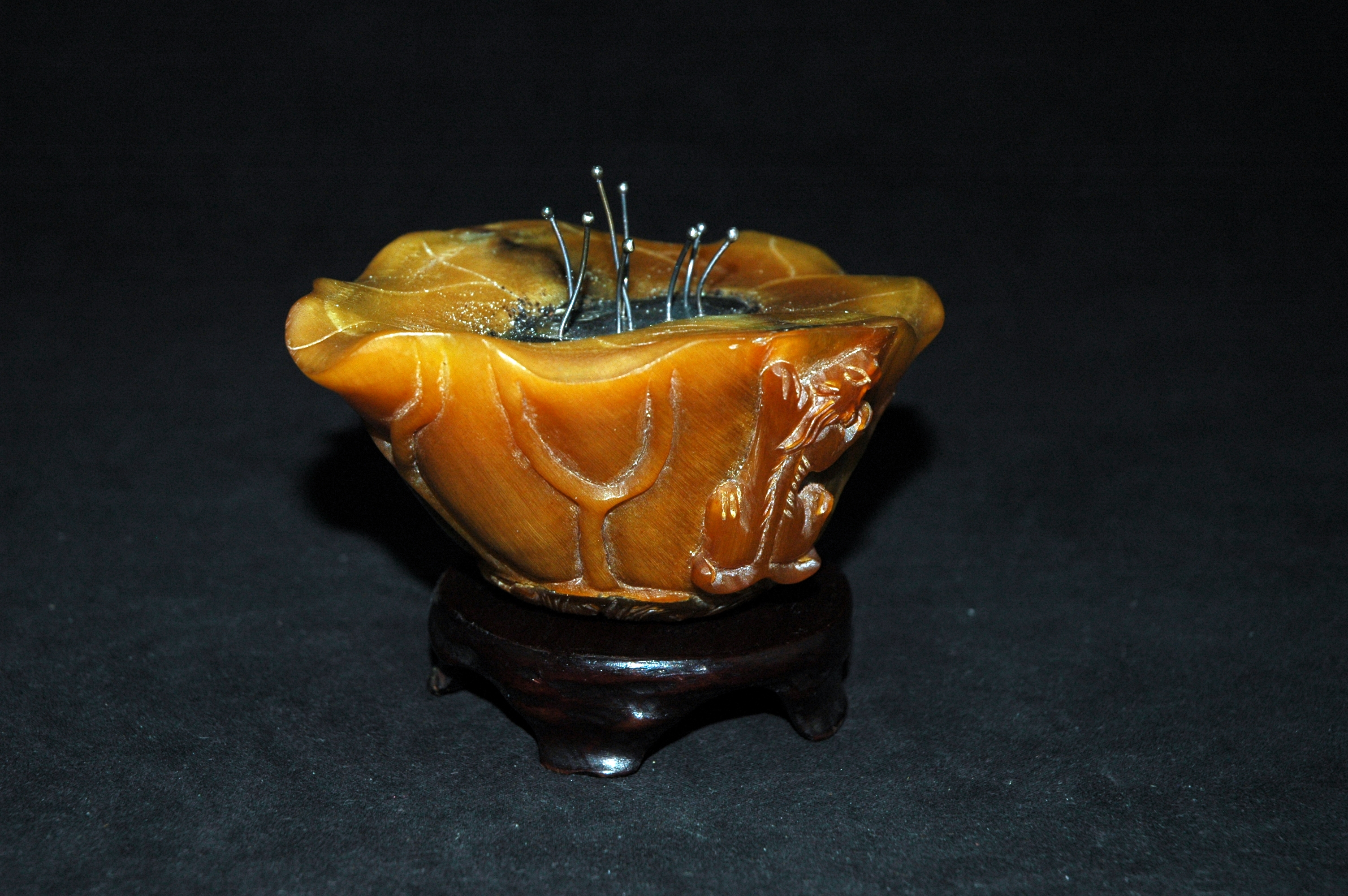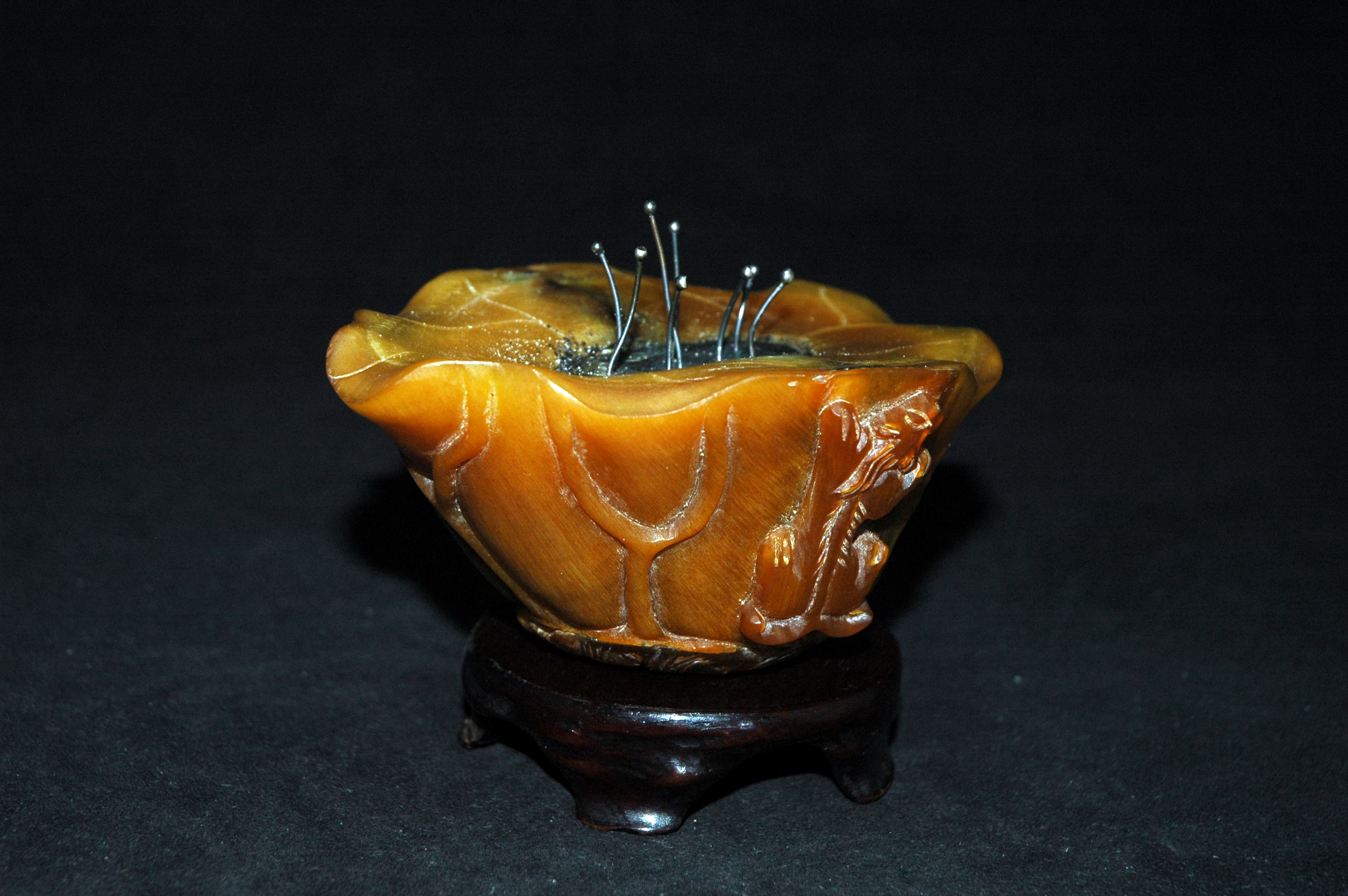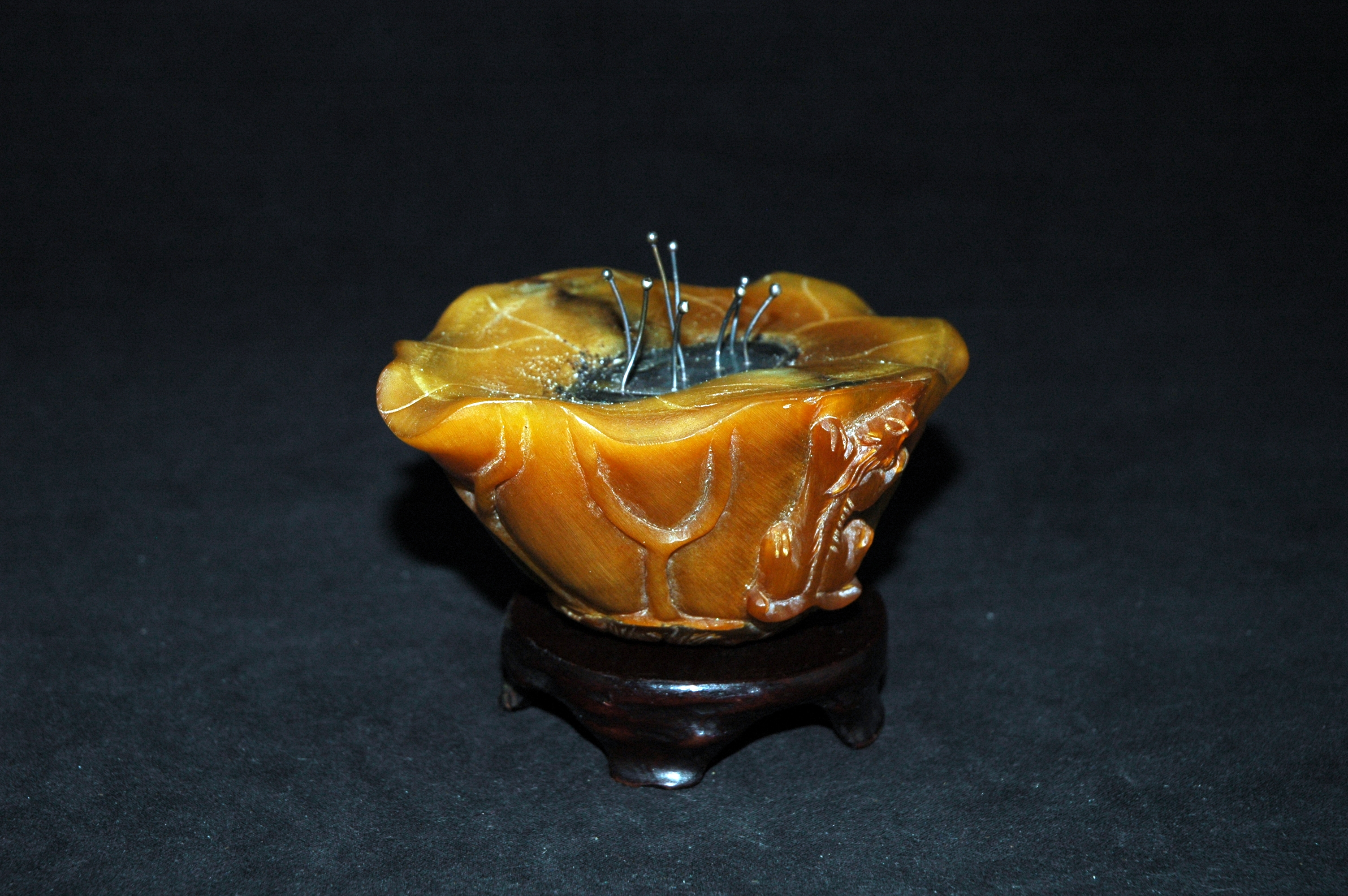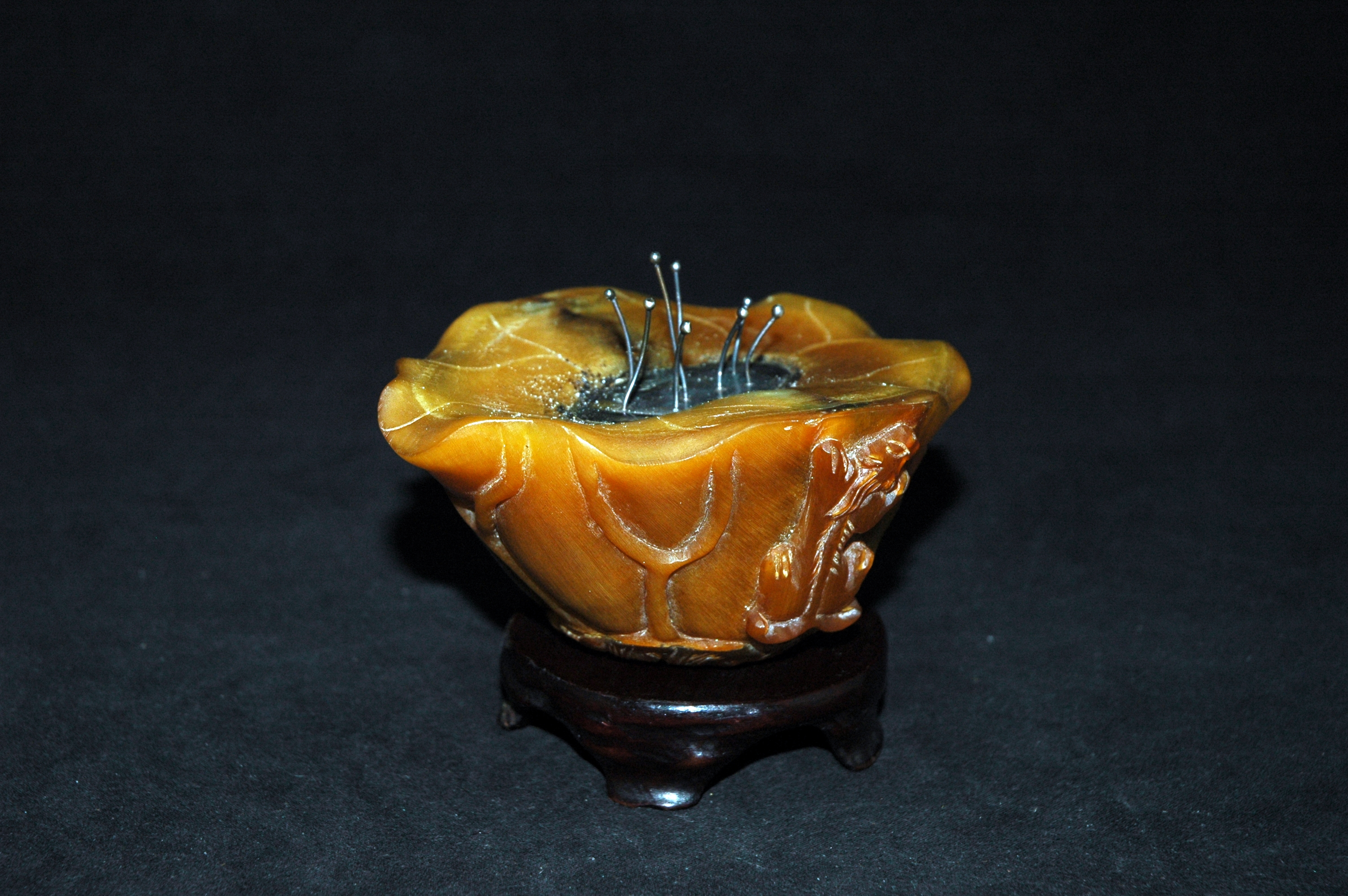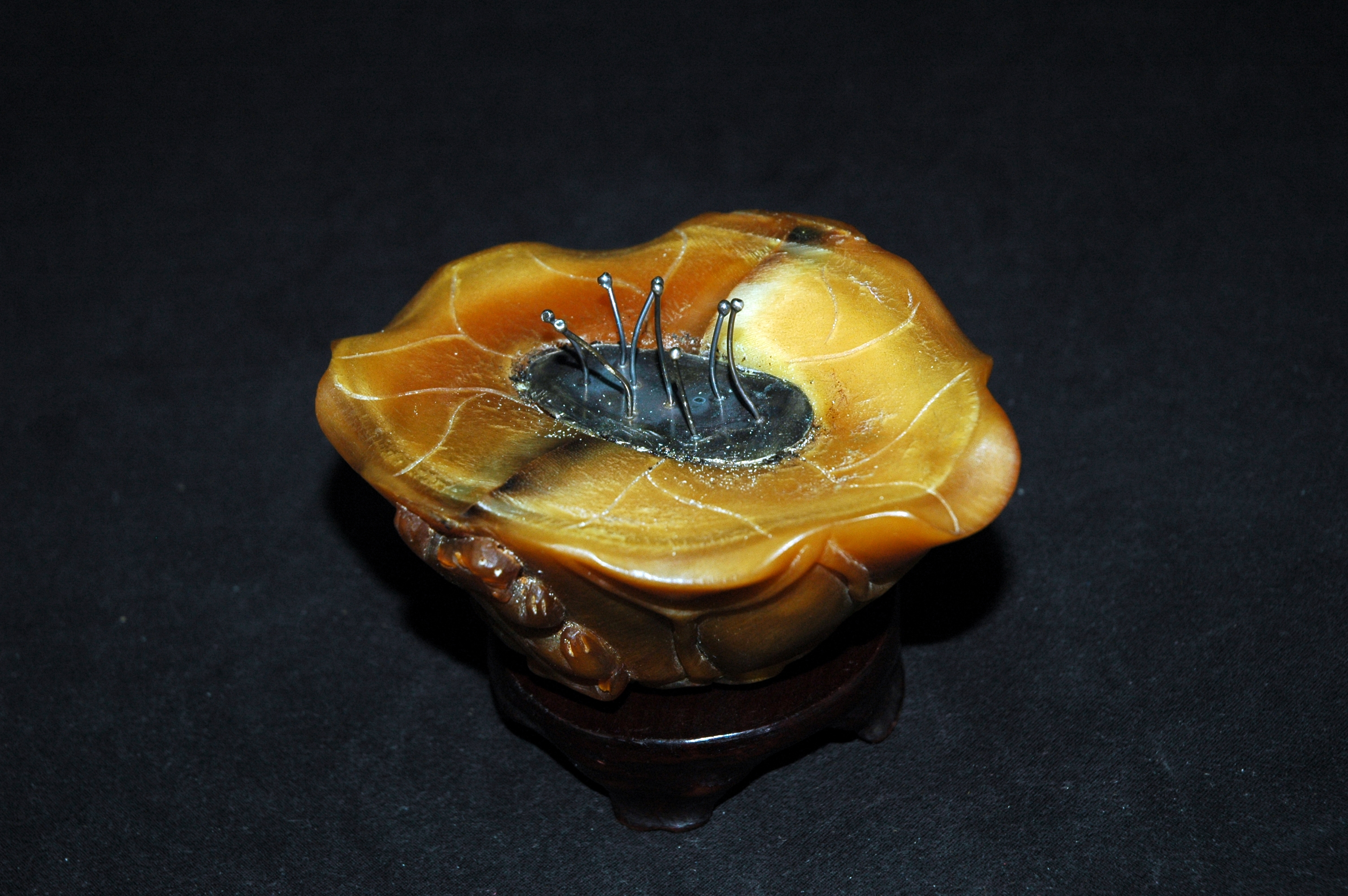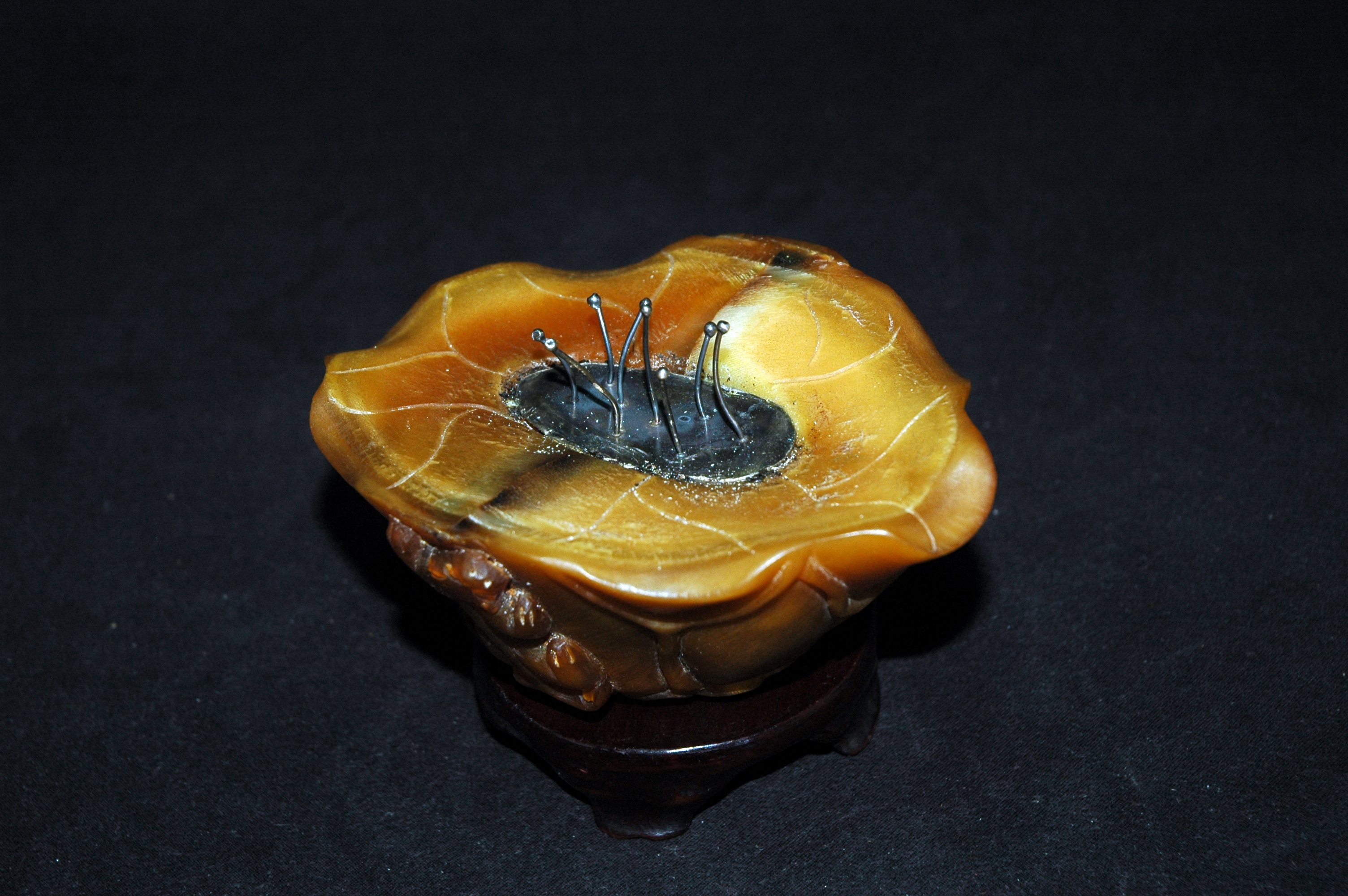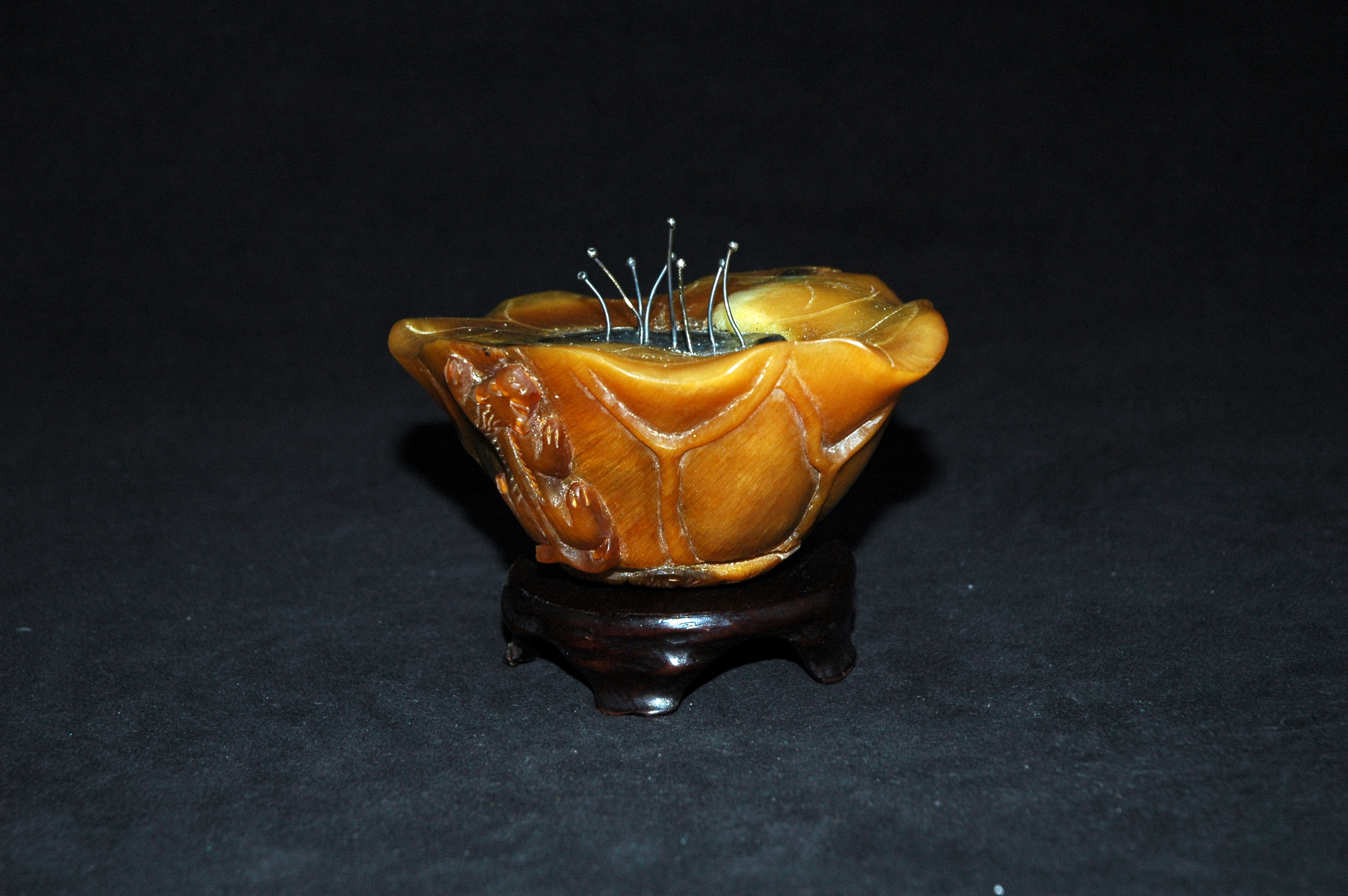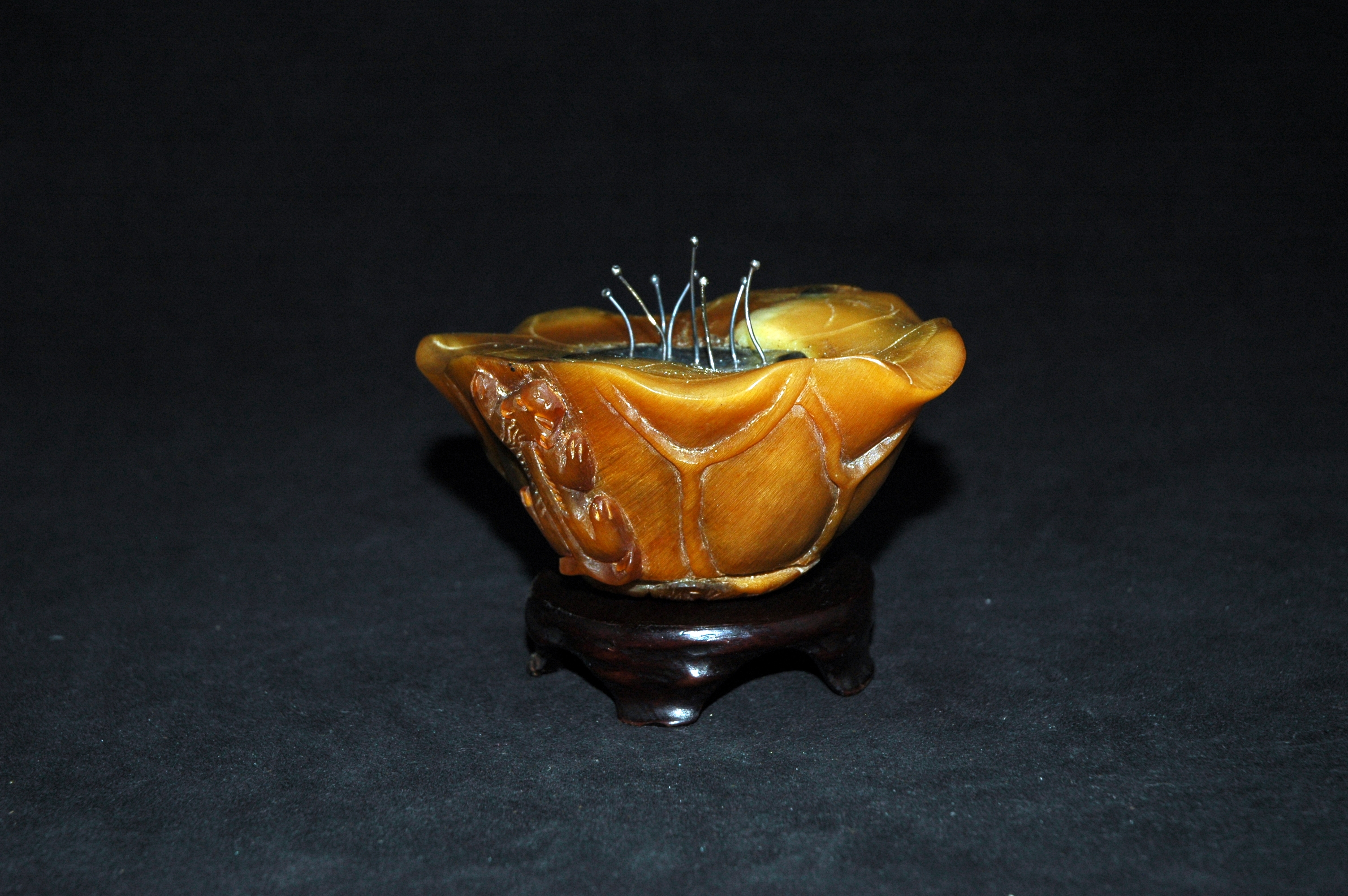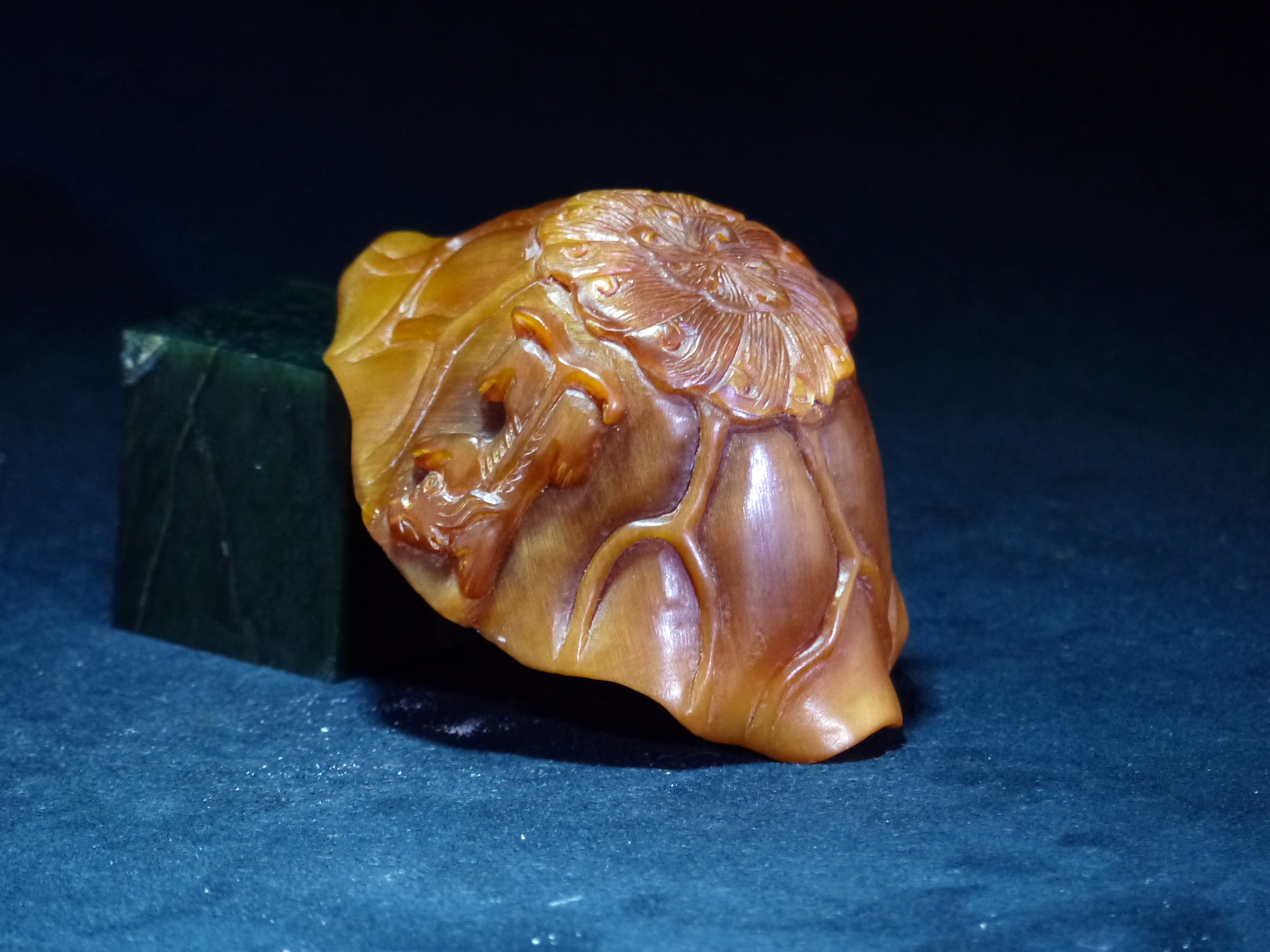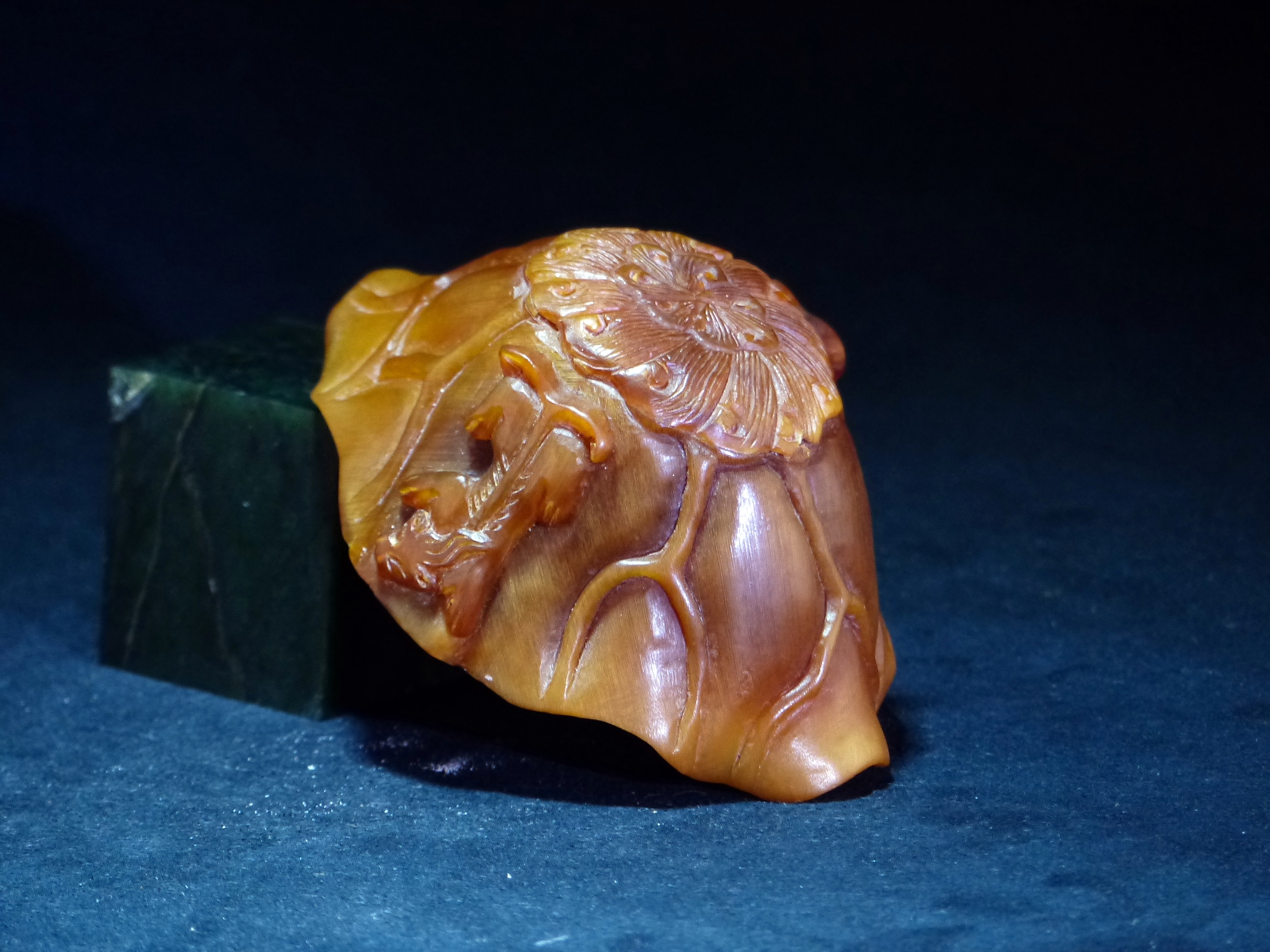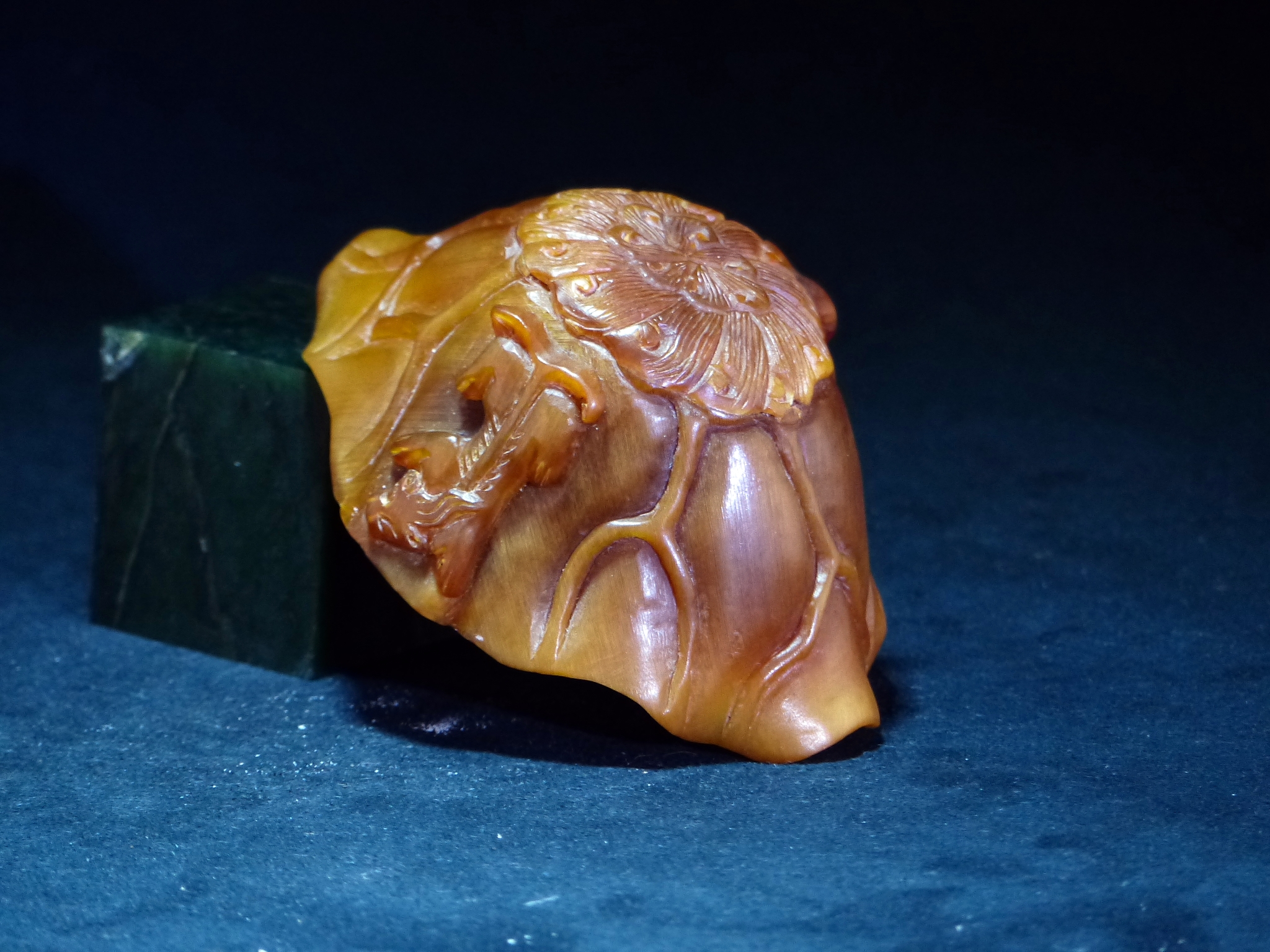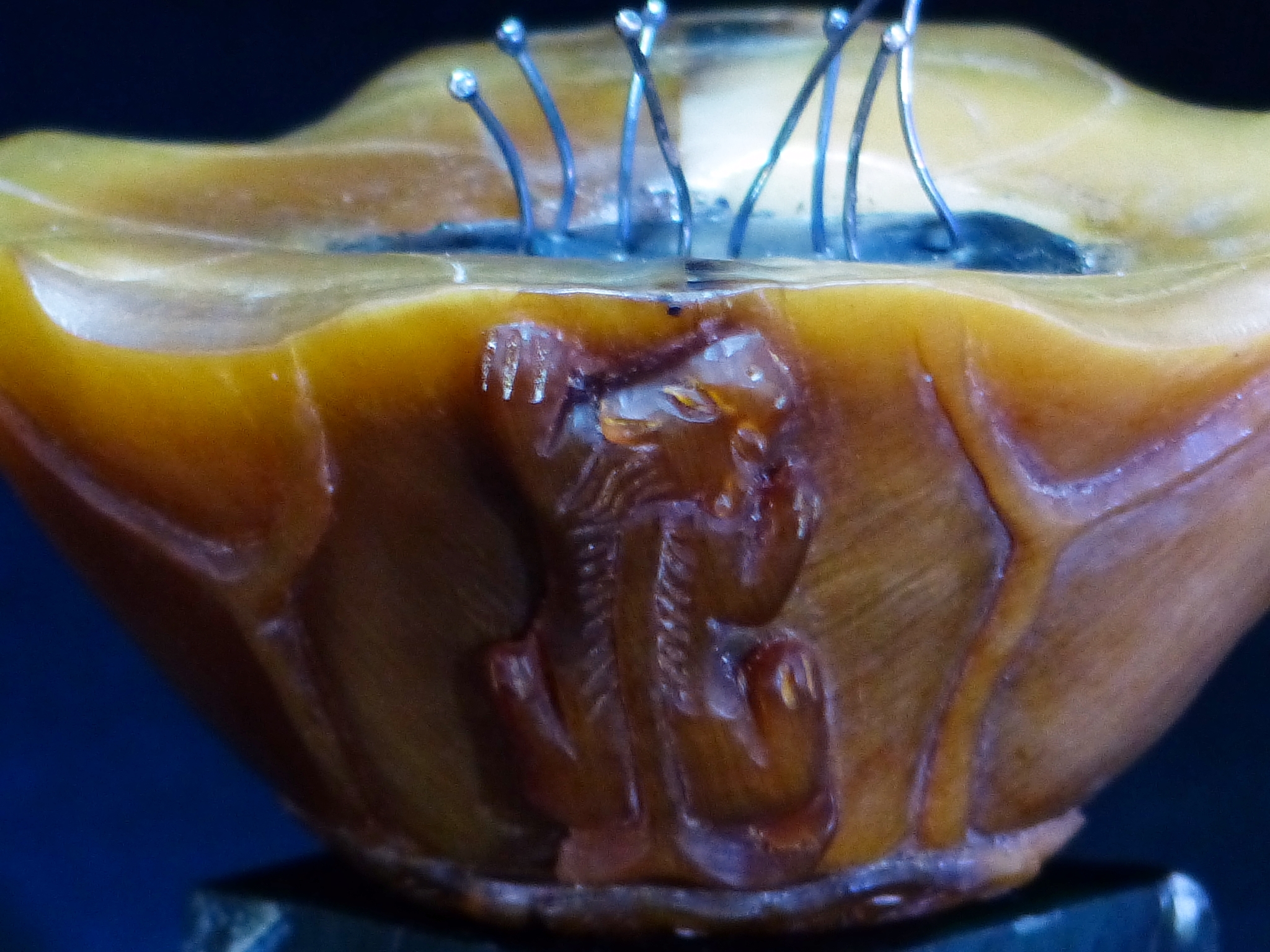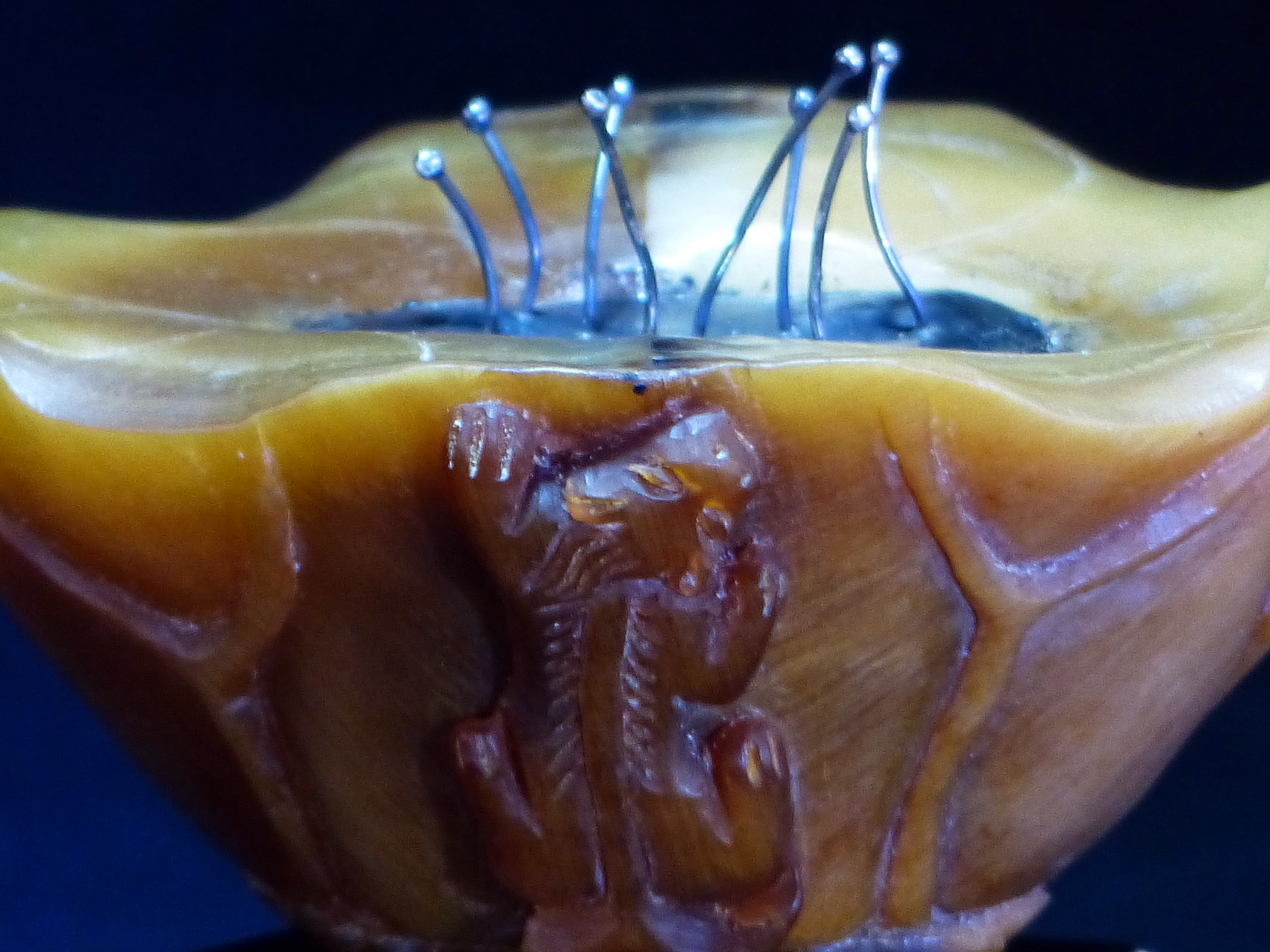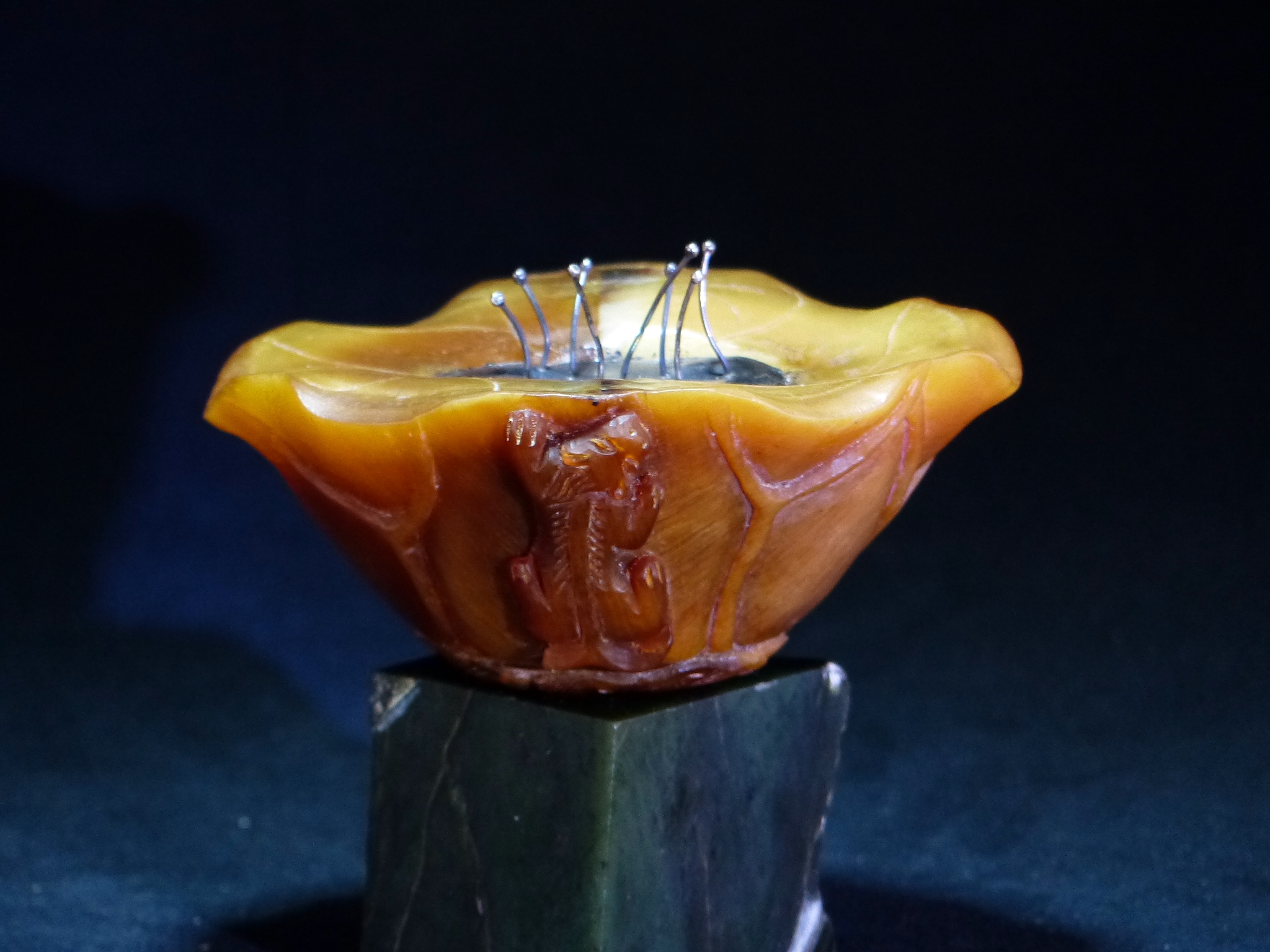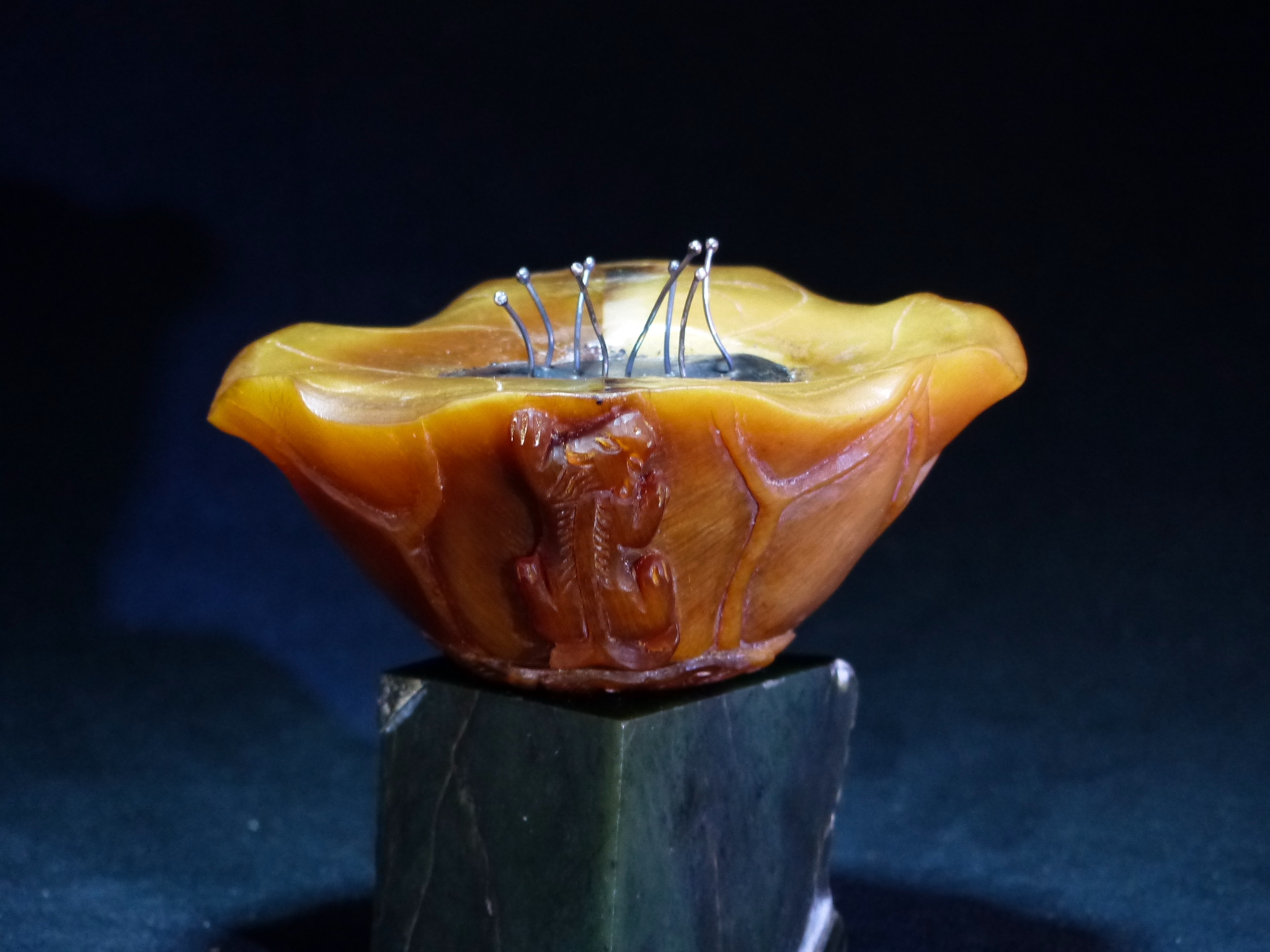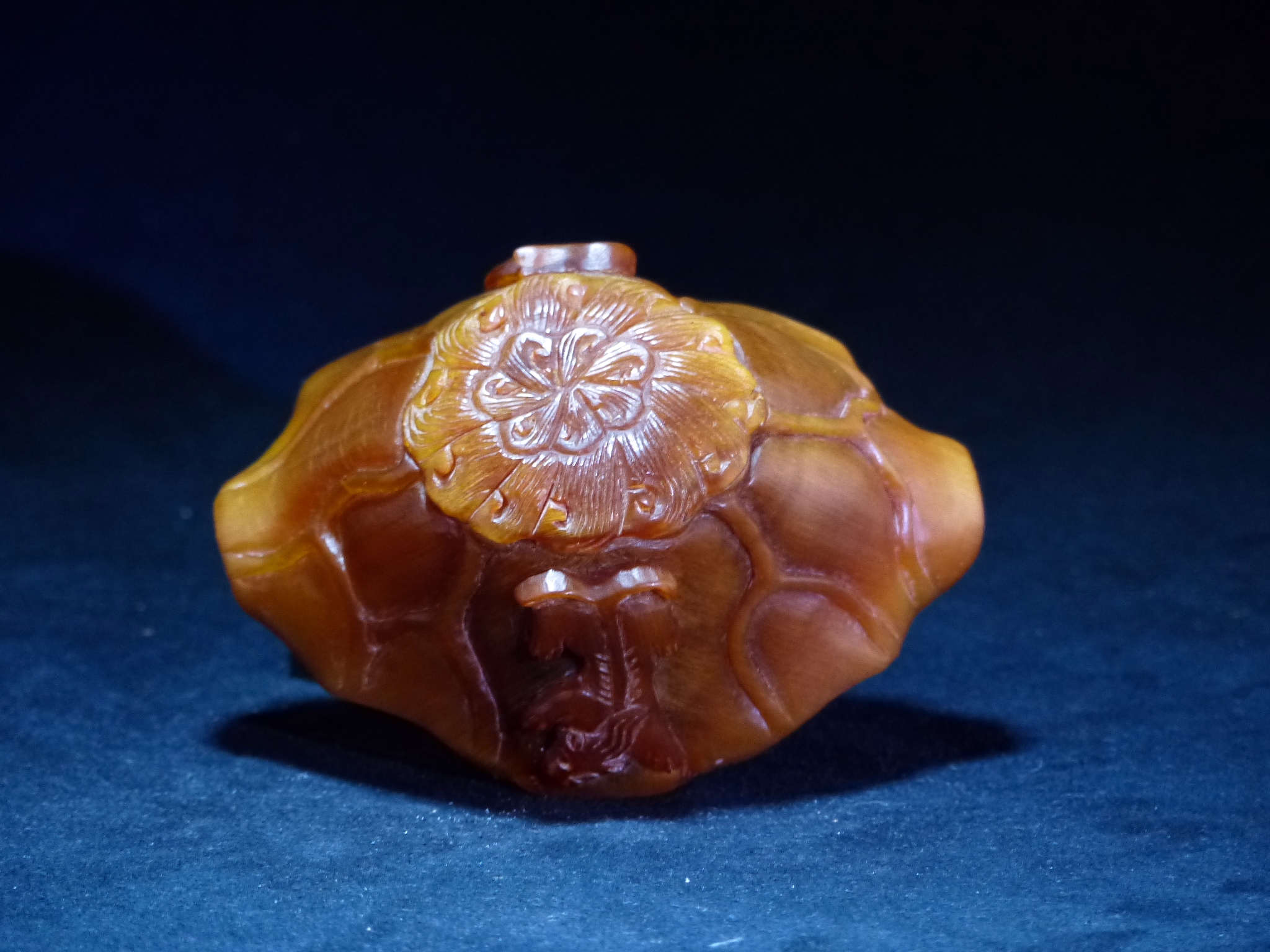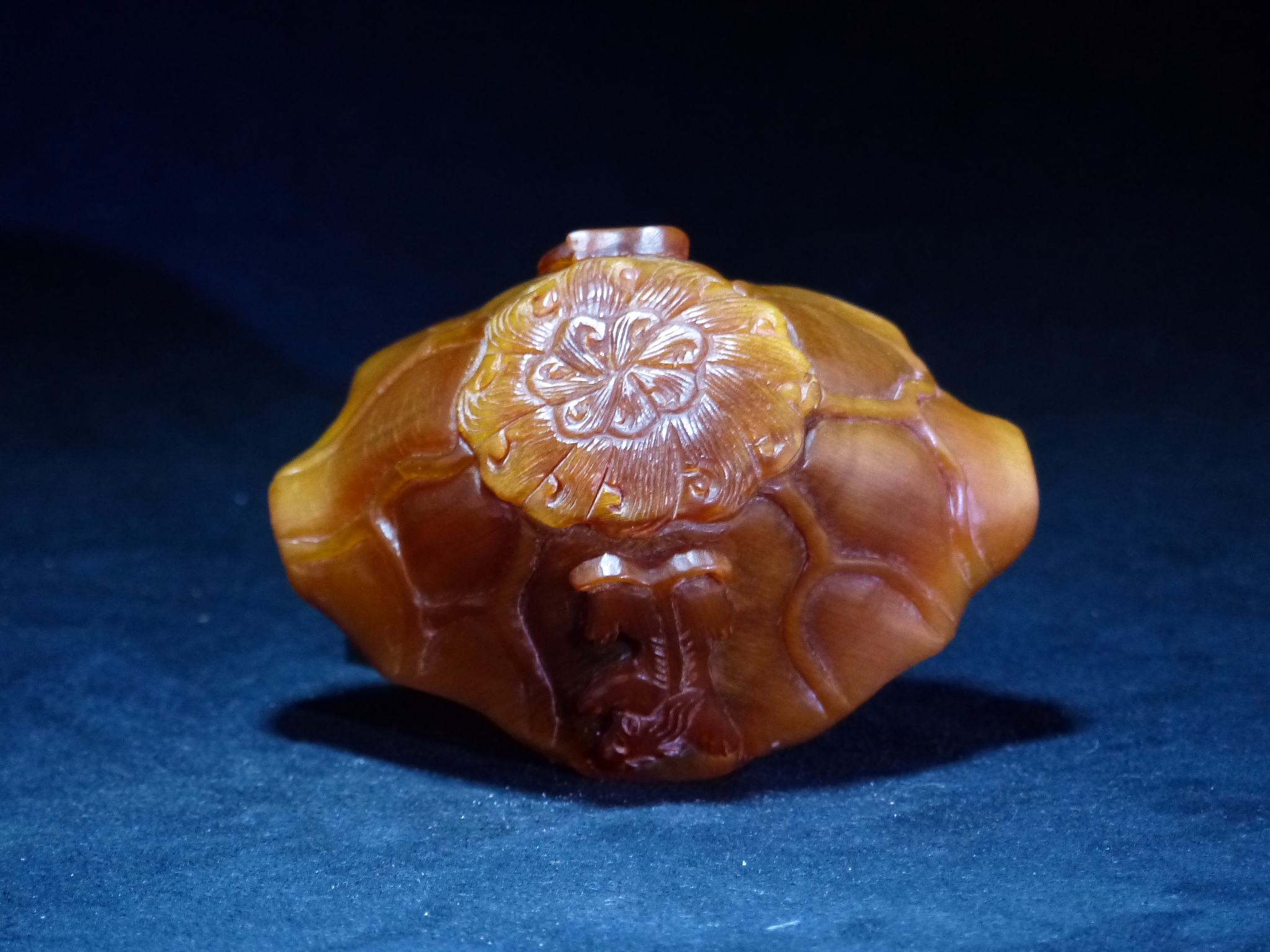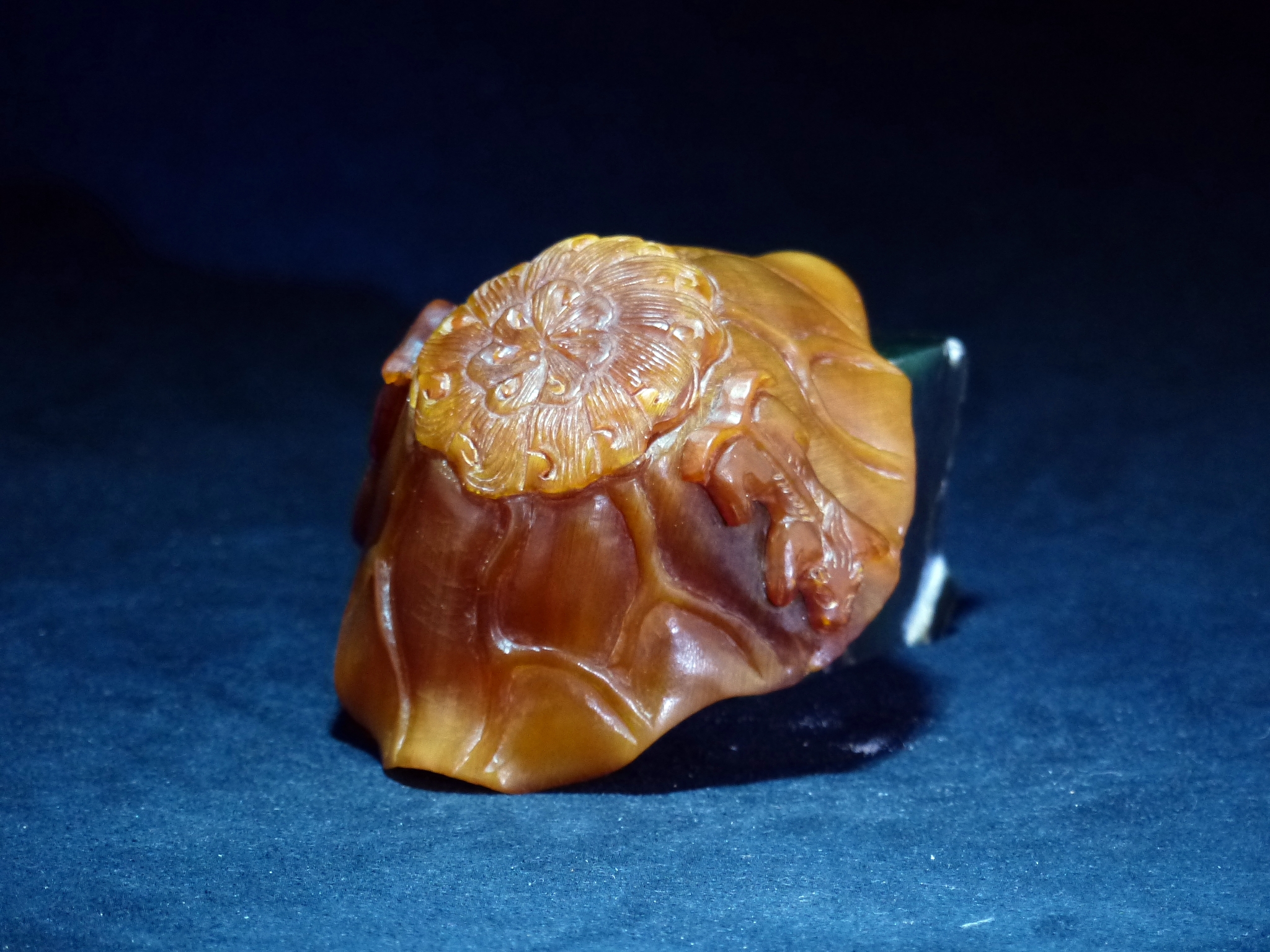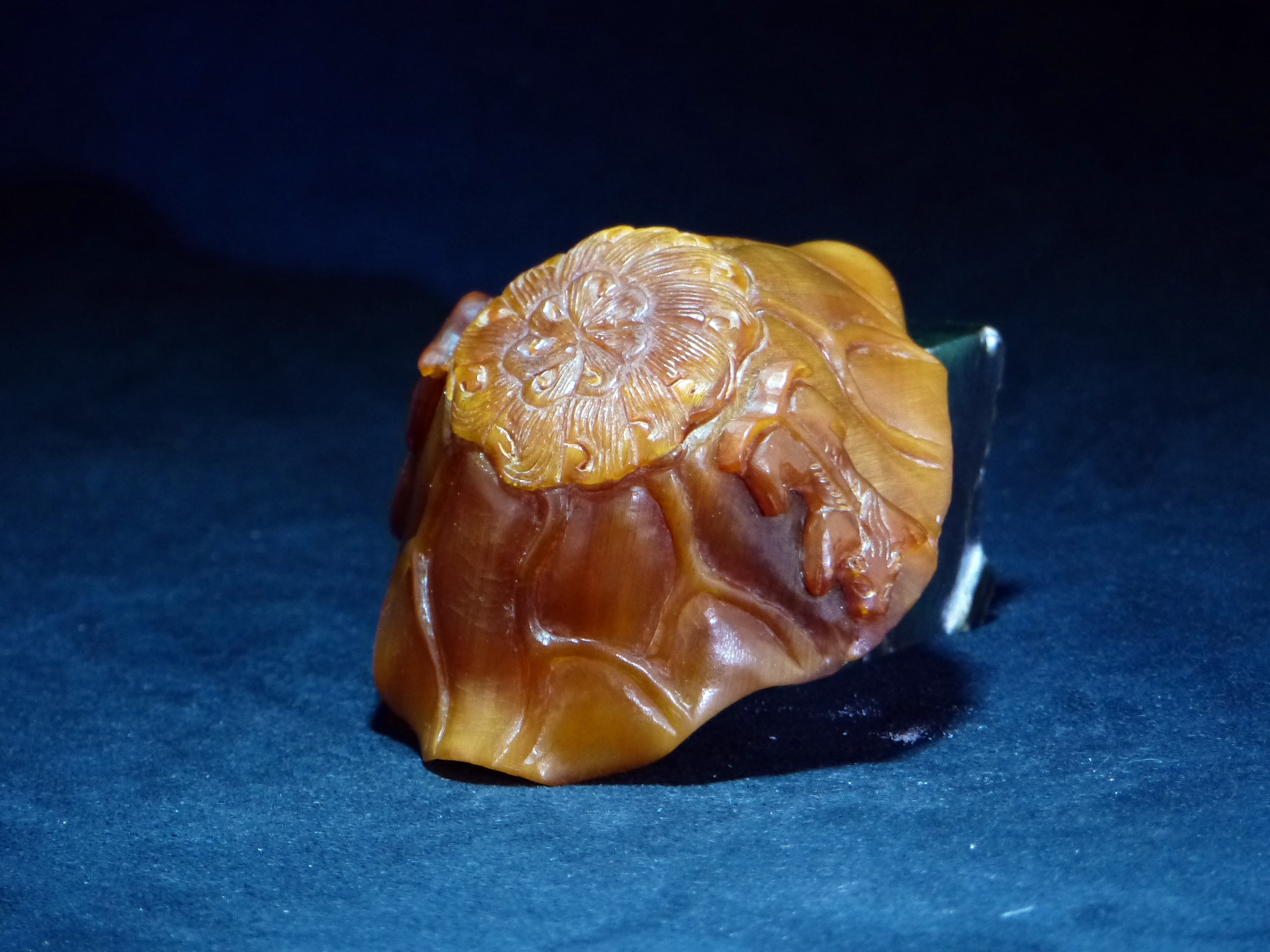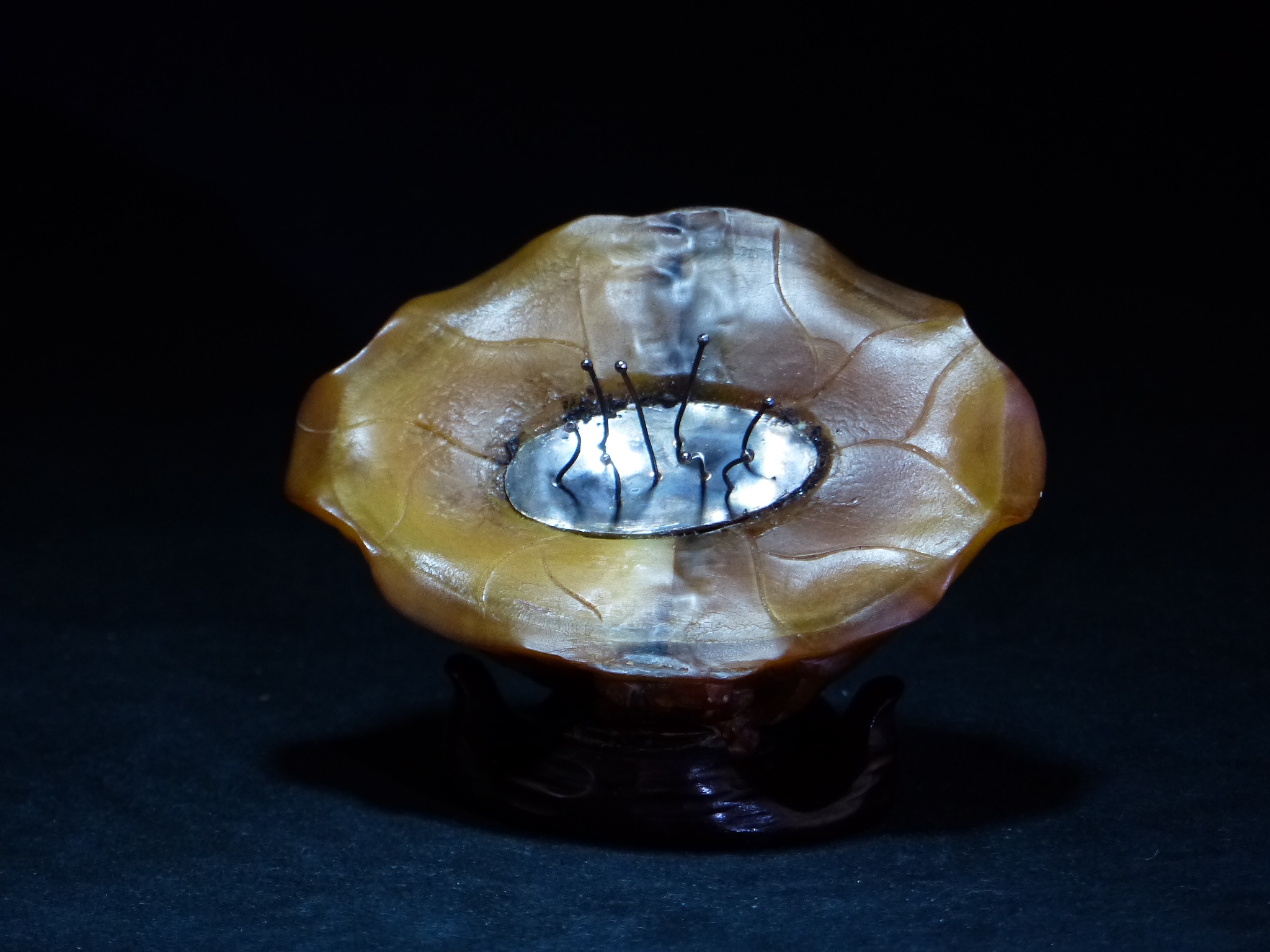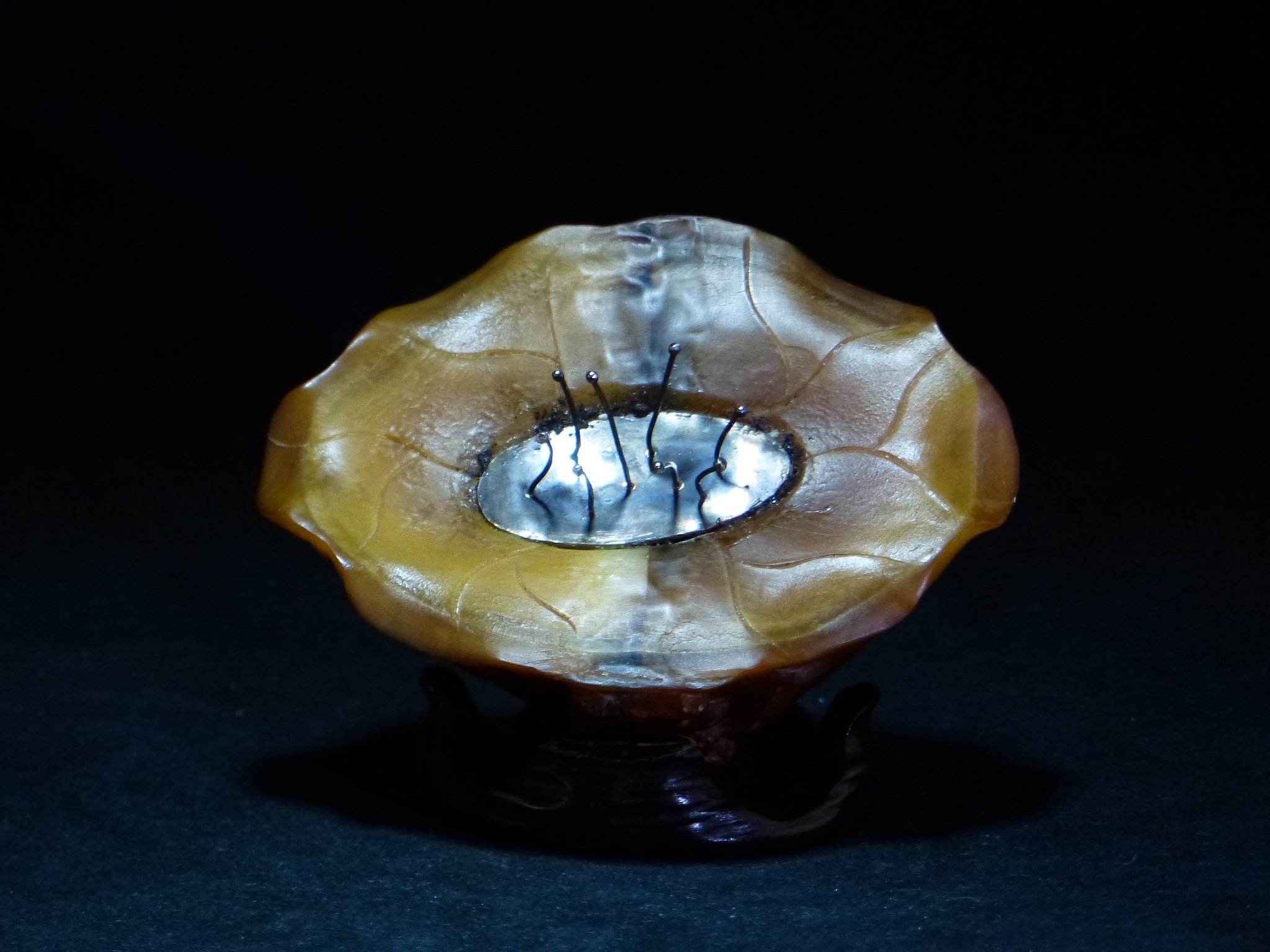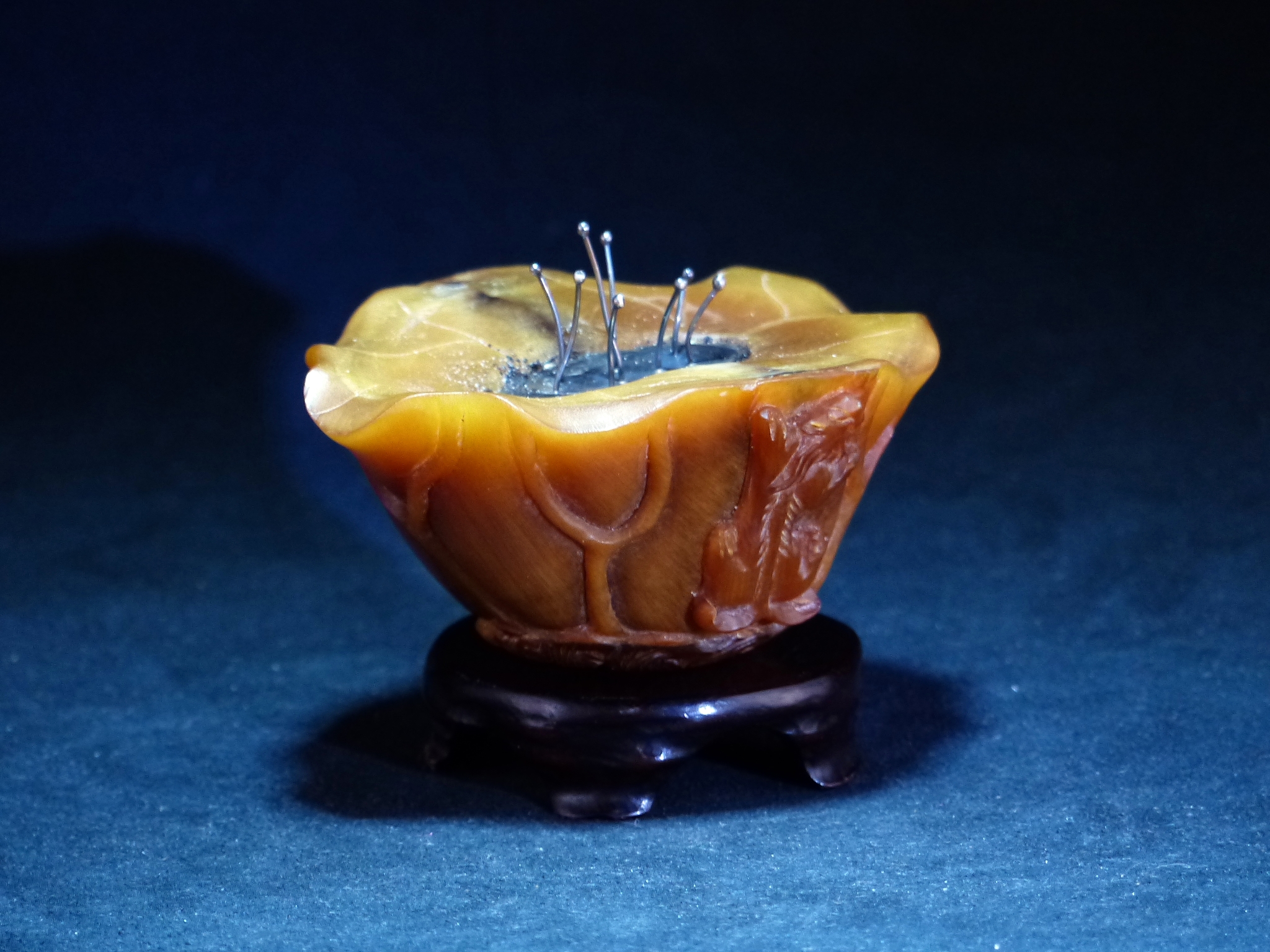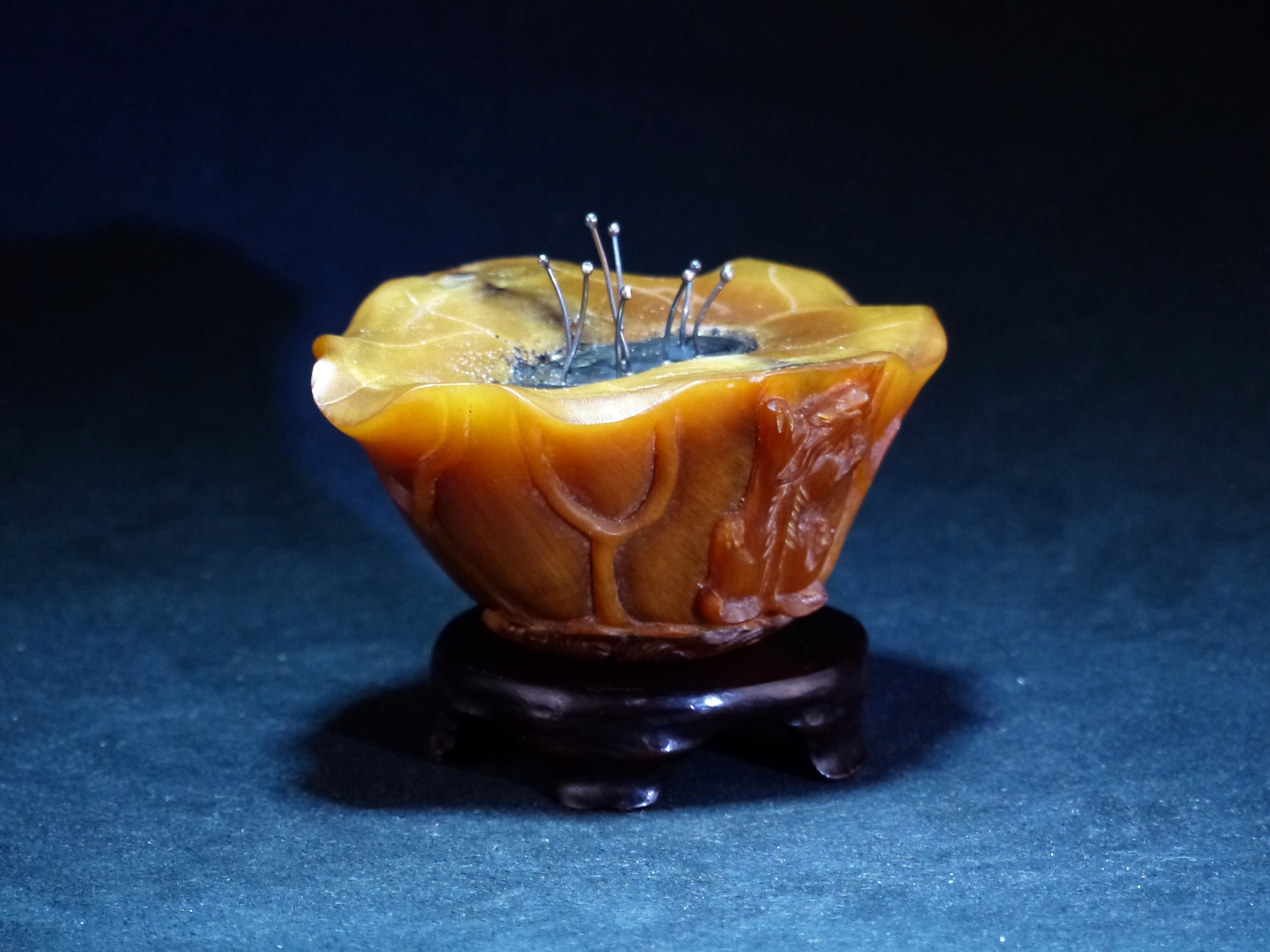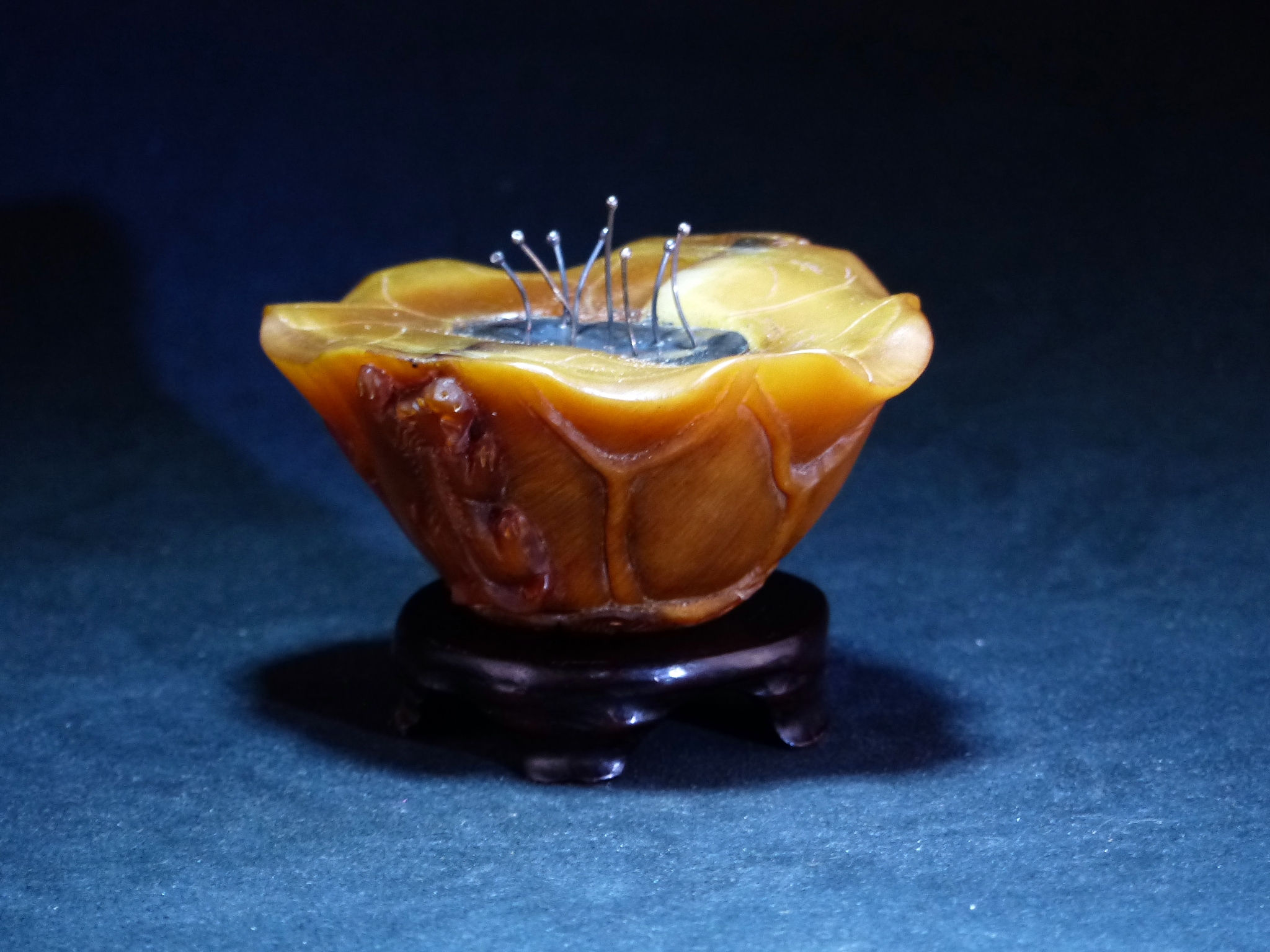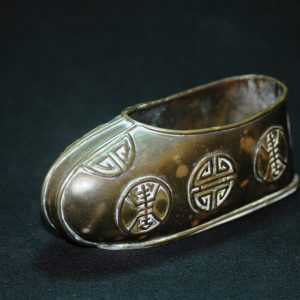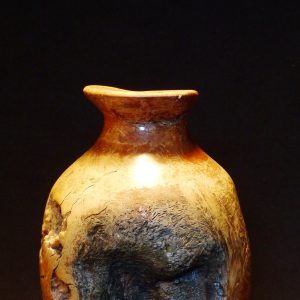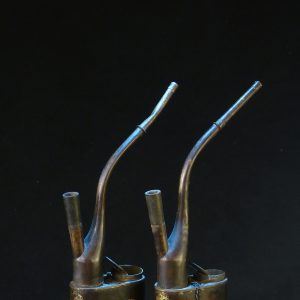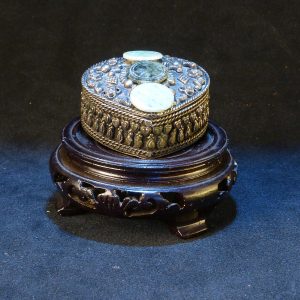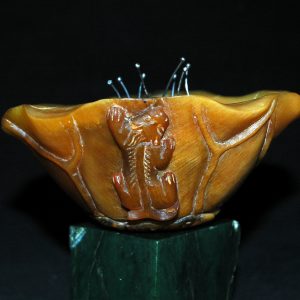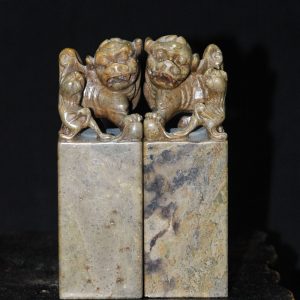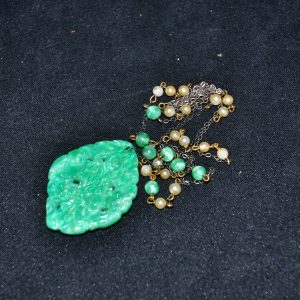Description
雕犀角荷花螭龙爵杯
拍賣 2963
重要中國瓷器及工藝精品
Hong Kong|2012年11月28日
拍品2168|THE PROPERTY OF A HONG KONG COLLECTOR
明末/ 清初 犀角光素盃
LATE MING/EARLY QING DYNASTY, 17TH CENTURY
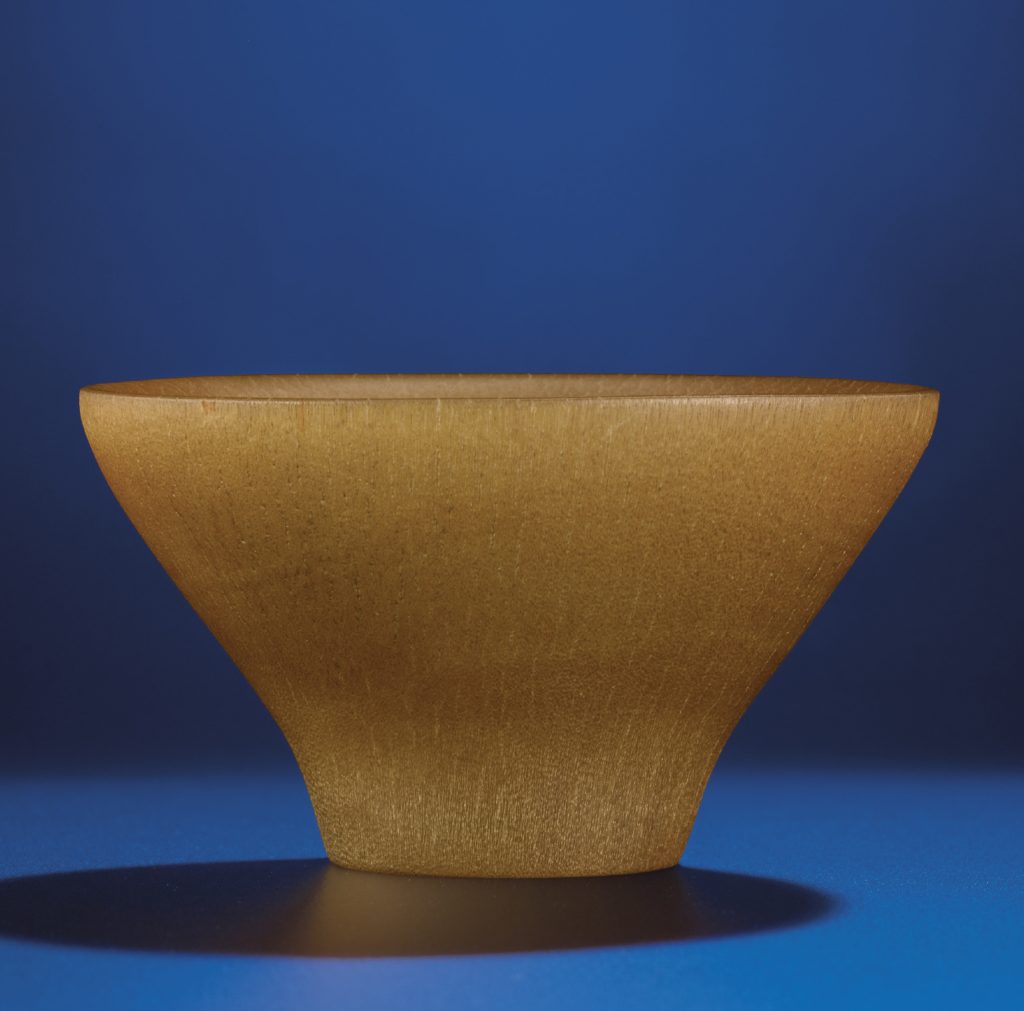
成交總額
HKD 437,500
估價
HKD 120,000 – HKD 180,000
明末/ 清初 犀角光素盃
來源
Acquired in New York, 1998
參考:紐約大都會博物館 清 角雕觀音立像 Bodhisattva Guanyin
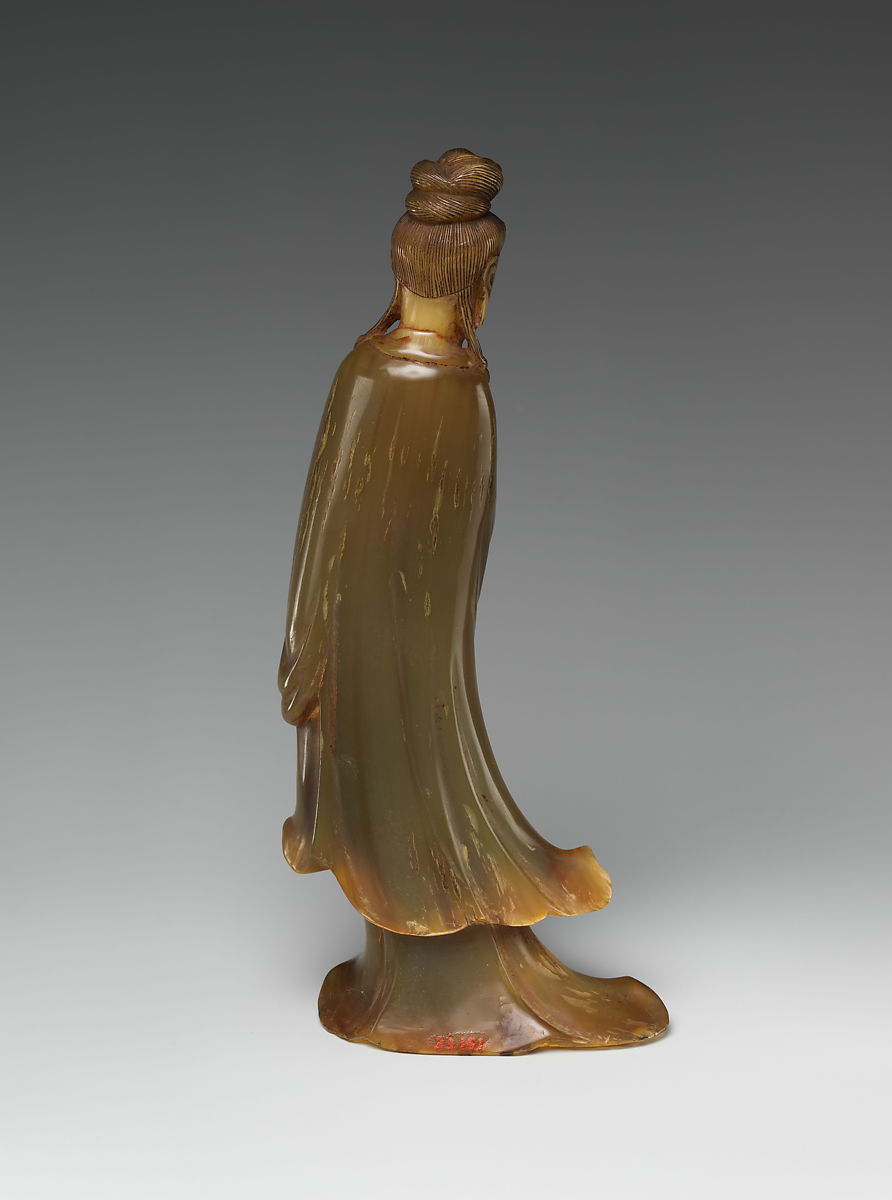

18th–19th century
China
On view at The Met Fifth Avenue in Gallery 222
Bodhisattva Guanyin, Horn, China
Object Details
Period:Qing dynasty (1644–1911)
Date:18th–19th century
Culture:China
Medium:Horn
Dimensions:H. 7 1/2 in. (19.1 cm); Base: W. 3 1/8 in. (7.9 cm); D. 1 3/4 in. (4.4 cm)
Classification:Horn
Credit Line:Fletcher Fund, 1933
Accession Number:33.161
Timeline of Art History
Timelines
Central and North Asia, 1600-1800 A.D.
China, 1600-1800 A.D.
参考:WATER, PINE AND STONE RETREAT COLLECTION, SCHOLARLY ART III
134 A RHINOCEROS HORN ‘LOTUS LEAF’ CUP
SIGNED SHANG MING
QING DYNASTY, 18TH CENTURY
Estimate 500,000 — 700,000 HKD
LOT SOLD. 2,440,000 HKD
naturalistically modelled as an half-opened lotus leaf with furled edges, finely detailed overall with a network of veins, the interior carved in low relief with a carp and a conch, the exterior with a small insect clambering towards the mouth, further adorned with a blooming flower and a lotus root, all issuing from the same knotted openwork stem forming the foot, inscribed in seal script Shang Ming on the exterior, the horn of a warm chestnut-brown tone
10.4 cm., 4 1/8 in.
READ CONDITION REPORT
PROVENANCE
Christie’s New York, 19th March 2008, lot 324.
CATALOGUE NOTE
The present cup is a superb example of what is possibly one of the most popular decorative themes in the rhinoceros horn carver’s repertoire – the lotus leaf and flower. While it displays characteristic elements seen on cups of this design, such as the veining on the exterior of the leaf, the lotus stems and buds, this piece stands out for the inclusion of an insect and the two characters Shang Ming carved in relief on the exterior and a small fish and snail on the interior. Nature was on the forefront of the carver’s mind when rendering his composition, and by adding these small living creatures he had skilfully brought the piece to life.
Jan Chapman in The Art of Rhinoceros Horn Carving in China, London, 1999, p. 136, pl. 148, mentions an archaistic cup with a square seal containing the two characters Shang Ming, and notes that, judging from the style of the carving, its maker possibly worked in the late 18th century. Another cup by the same artist, decorated with a figural scene of boys playing traditional games, from the collection of Thomas Fok, is included ibid., pl. 149; and a further example carved with taotie masks and chilong, also in the Fok collection, is published in Thomas Fok, Connoisseurship of Rhinoceros Horn Carving in China, Hong Kong, 1999, pl. 18.
See a related lotus-leaf form cup carved with a small snail and a crab in its interior sold at Christie’s Hong Kong, 27th September 2008, lot 1703; and another comparable example, from the collections of Edward and Franklin Chow, sold in these rooms, 8th April 2011, lot 2715, with an unusual fashioning of its foot in the form of entwining lotus stalks.

SIGNED SHANG MING
QING DYNASTY, 18TH CENTURY

SIGNED SHANG MING
QING DYNASTY, 18TH CENTURY

SIGNED SHANG MING
QING DYNASTY, 18TH CENTURY

![[临渊阁]天地一家春](https://www.antiquekeeper.ca/wp-content/uploads/2023/03/cropped-Asian-Art-Wallpaper-Painting3-6-2.jpg)

